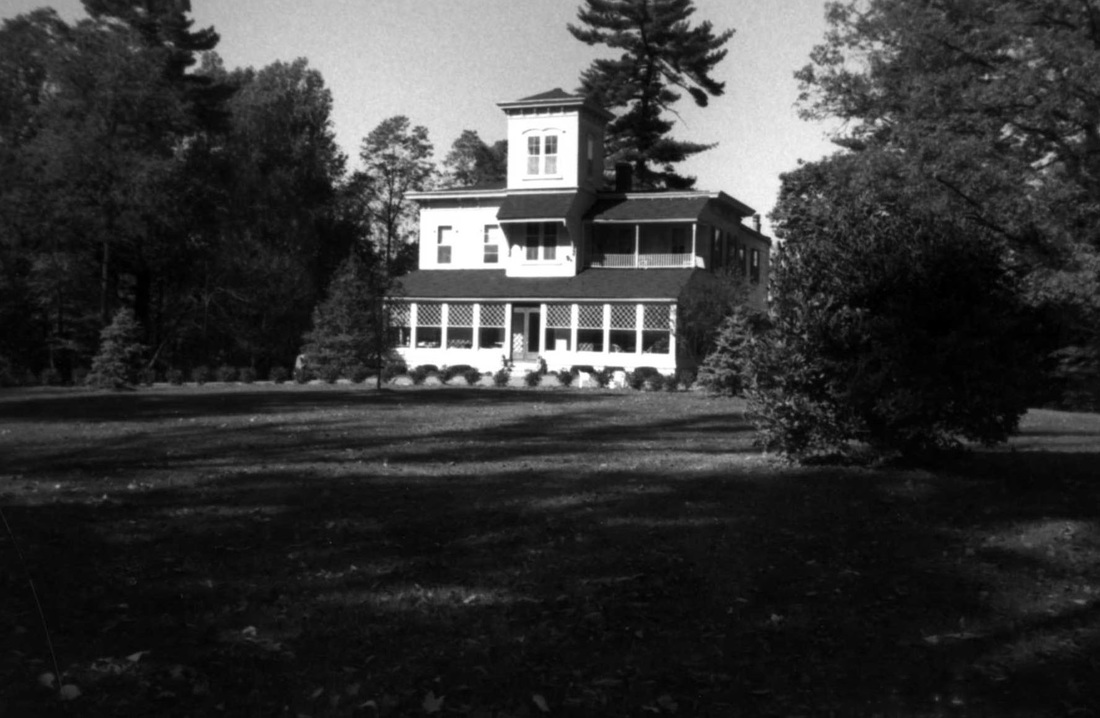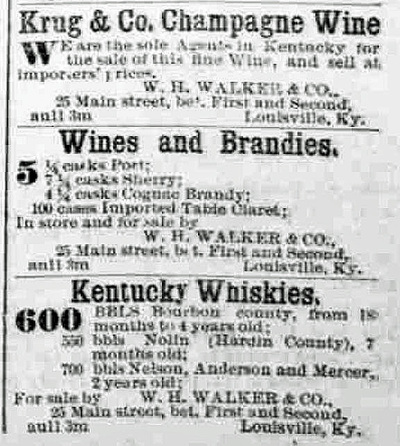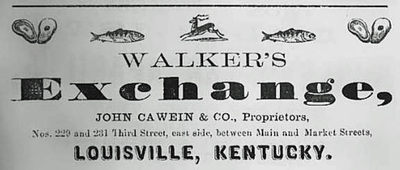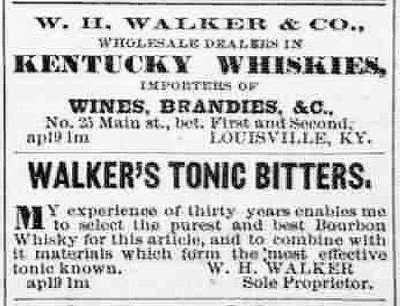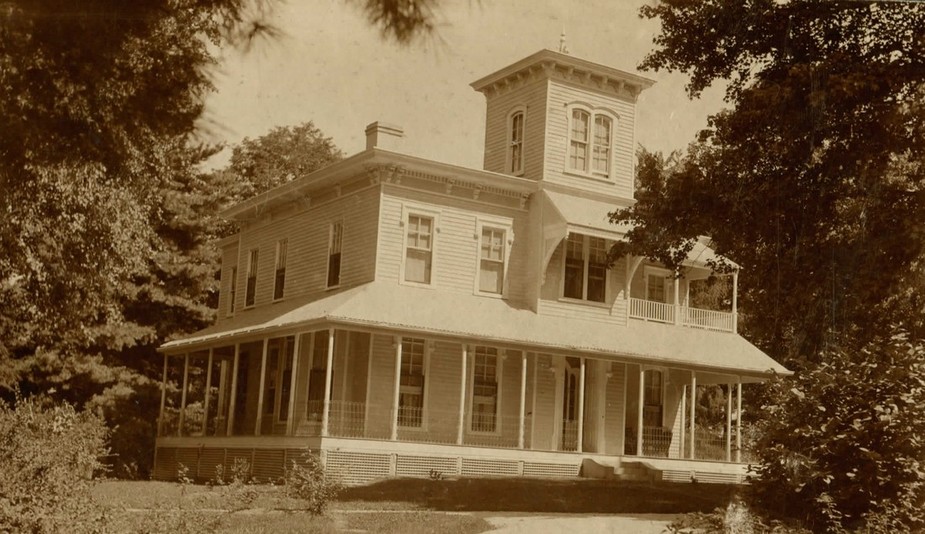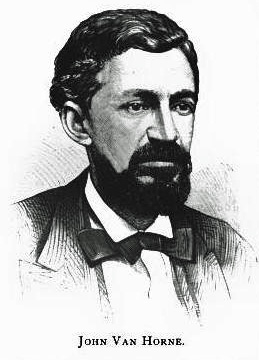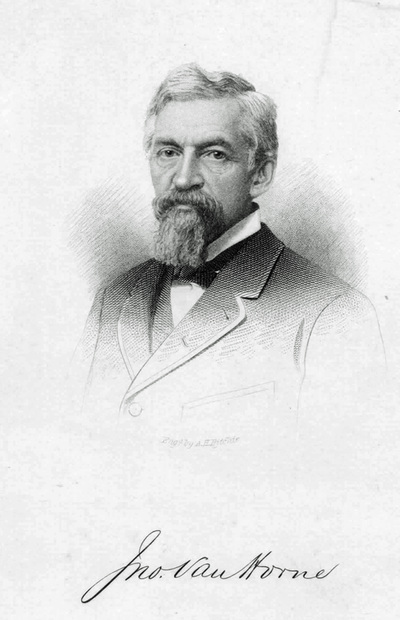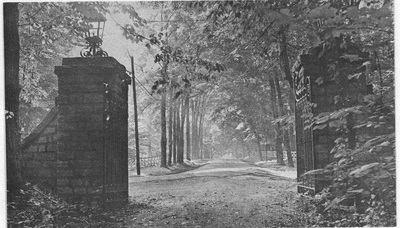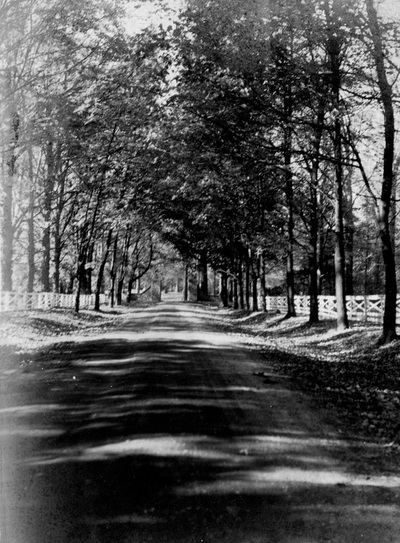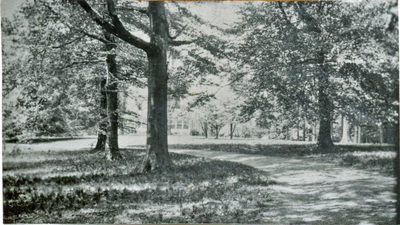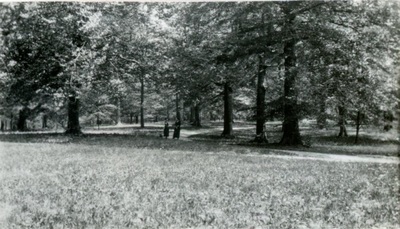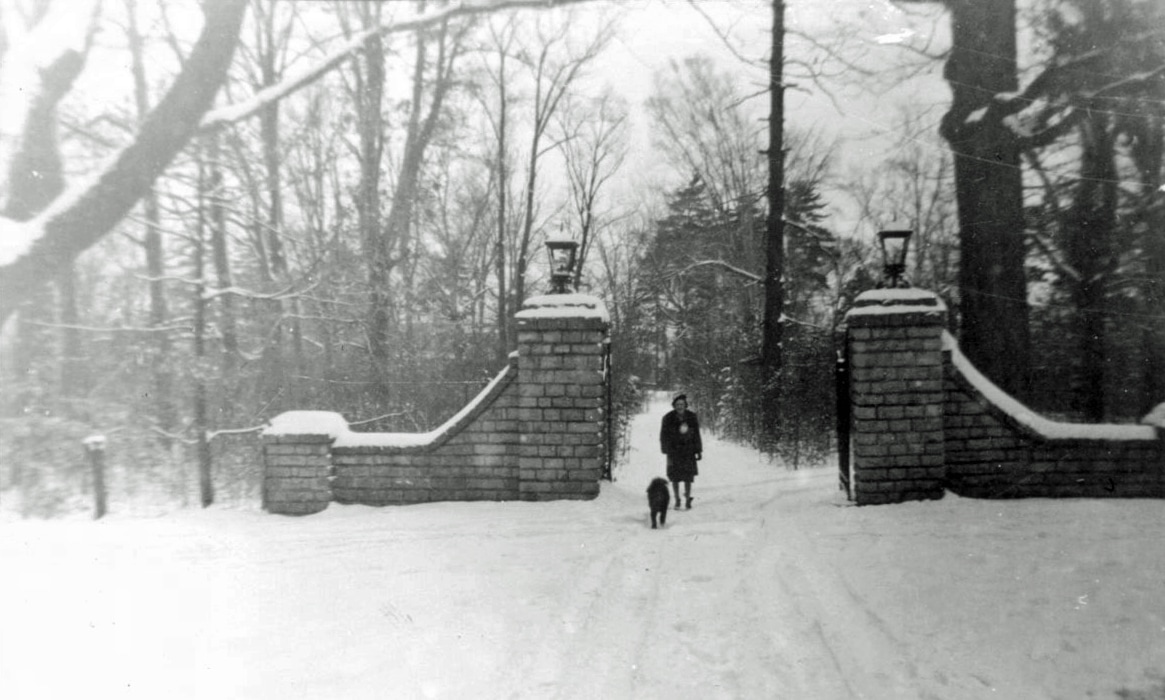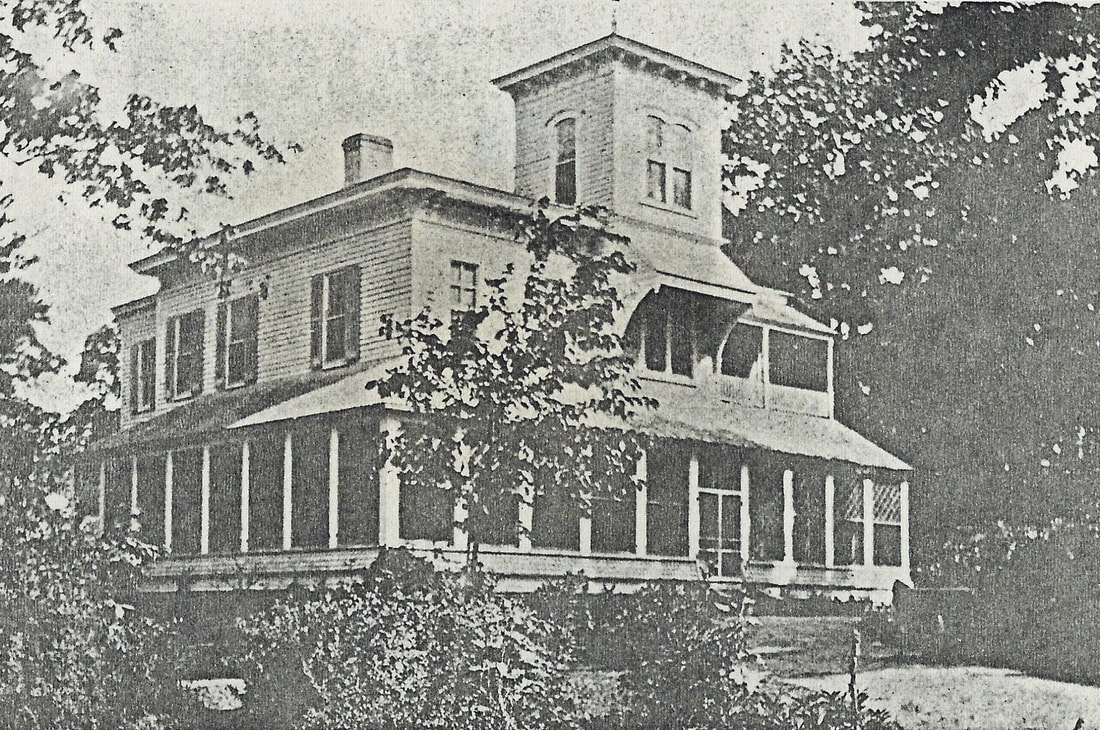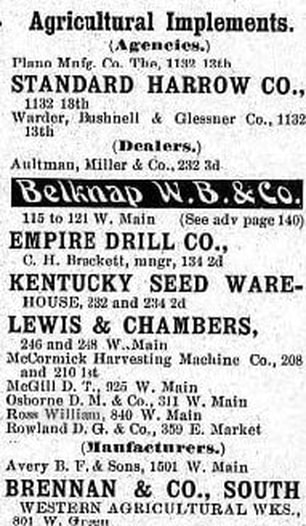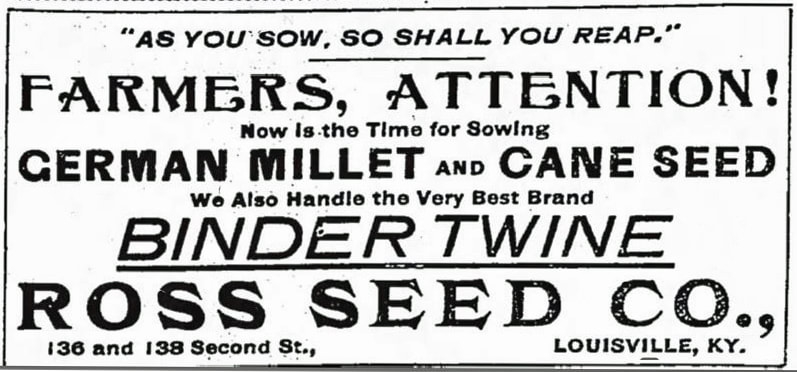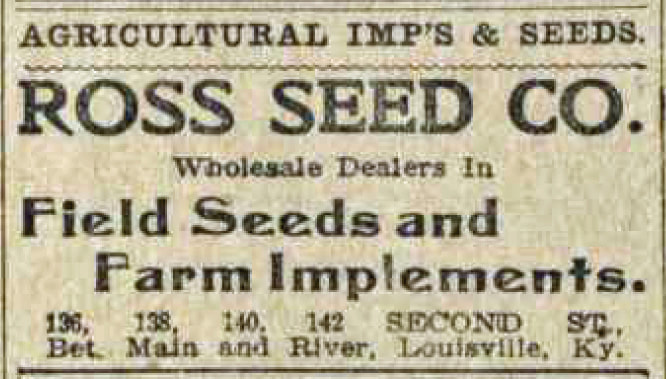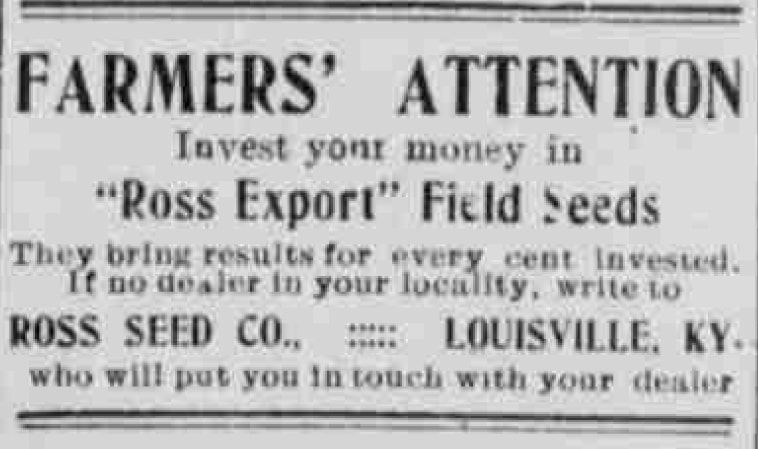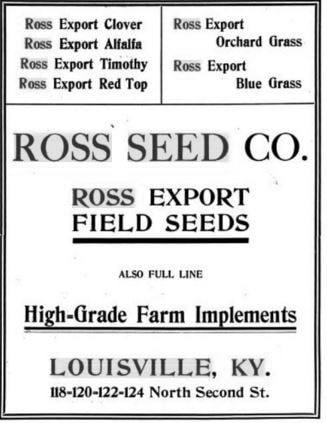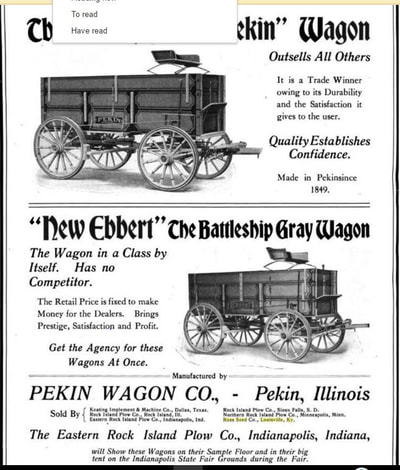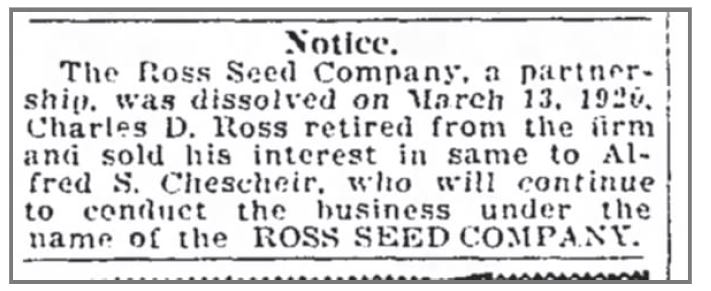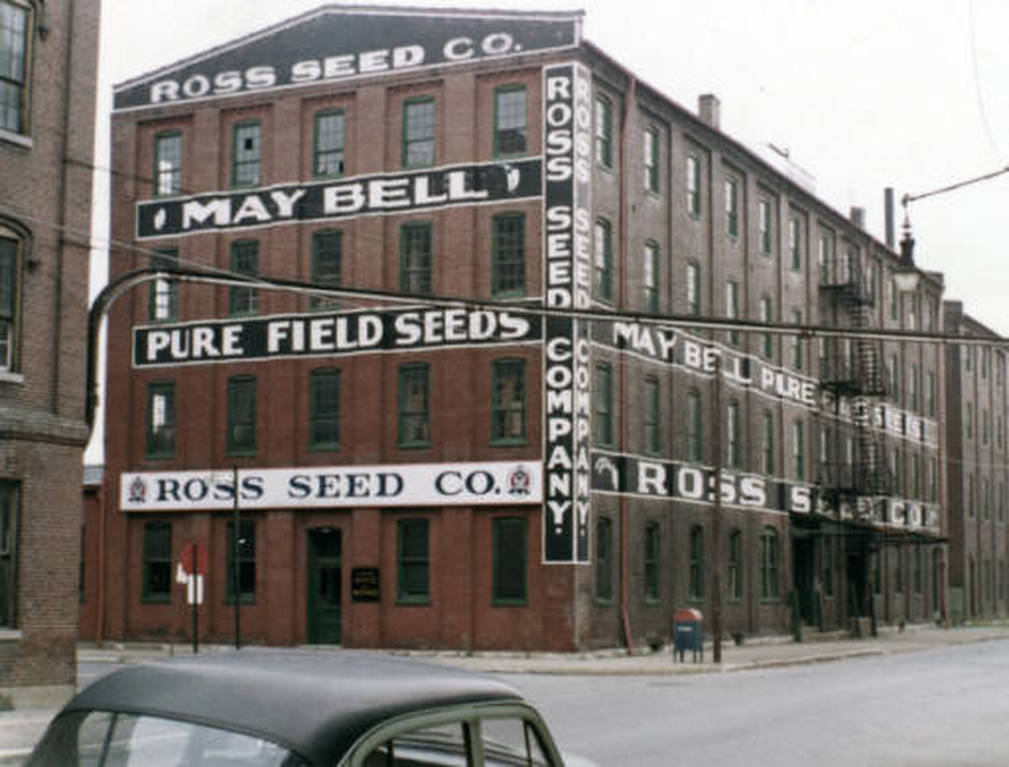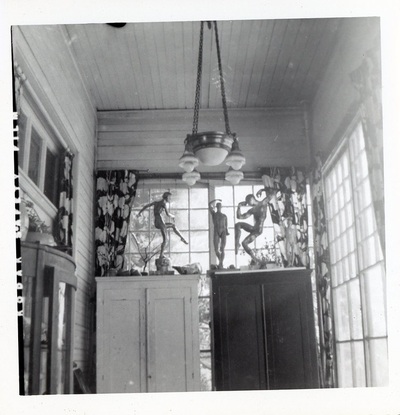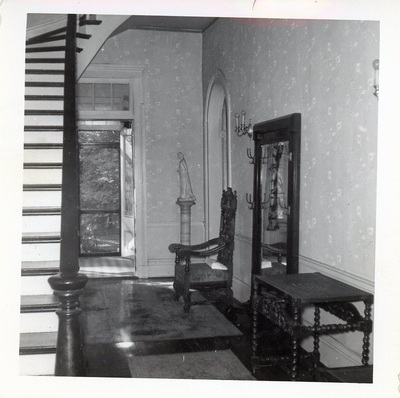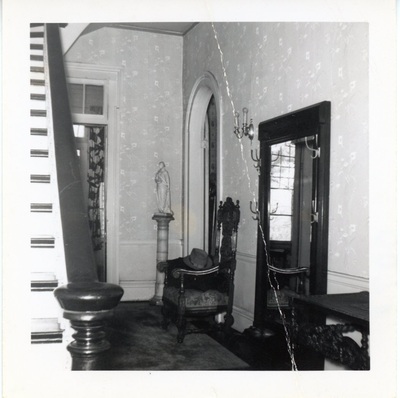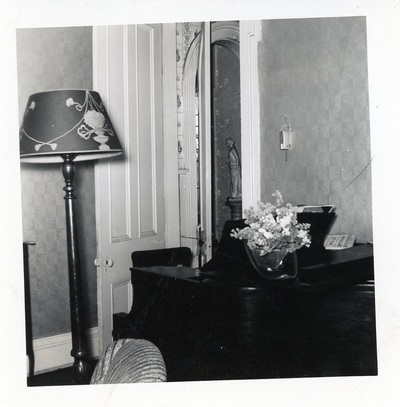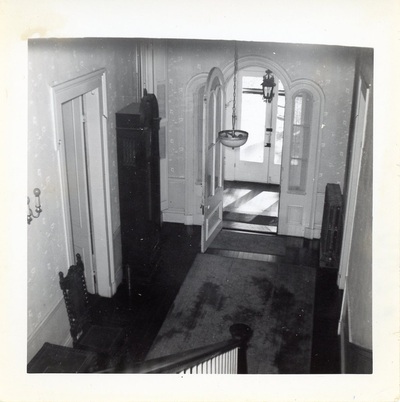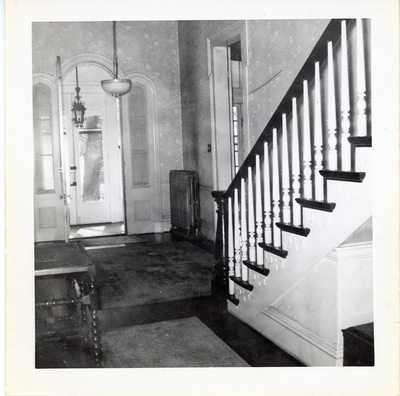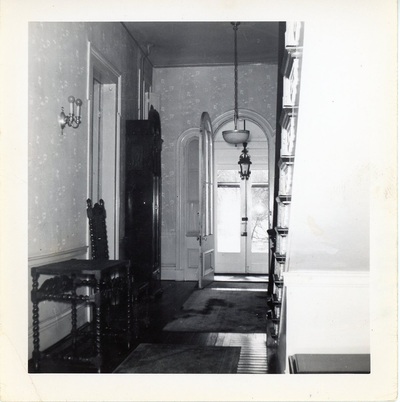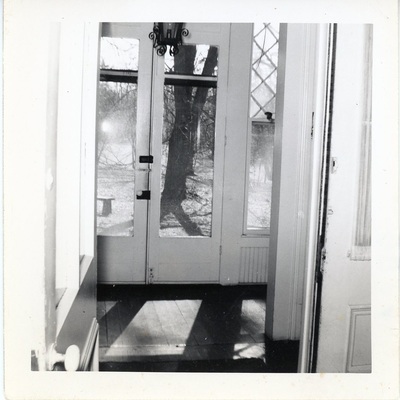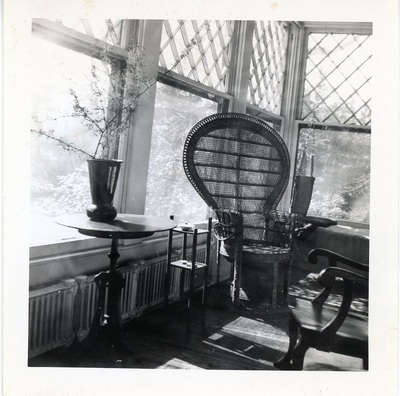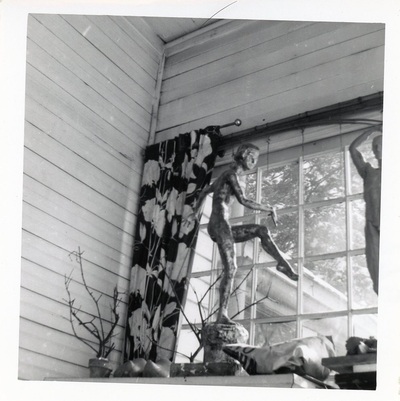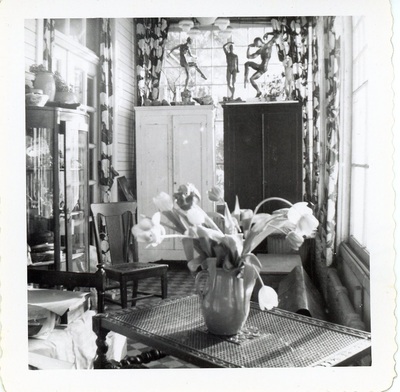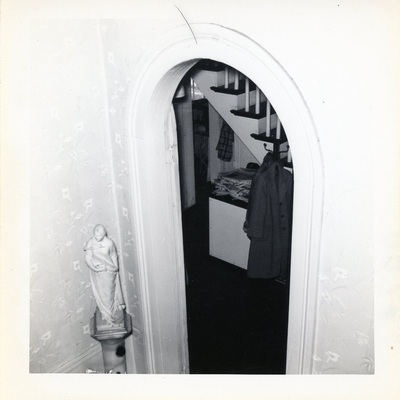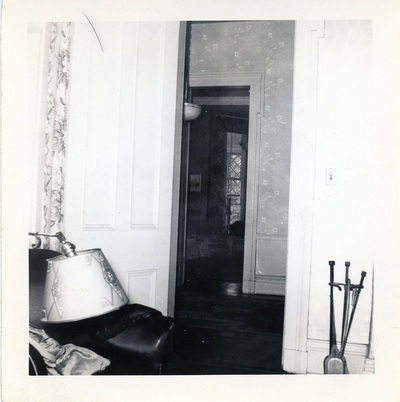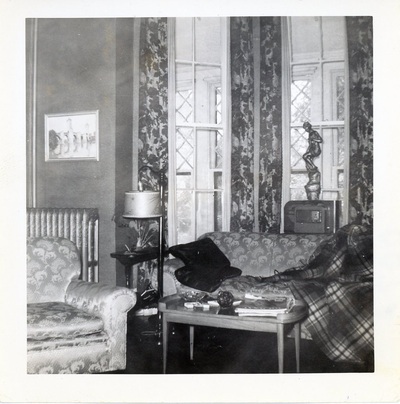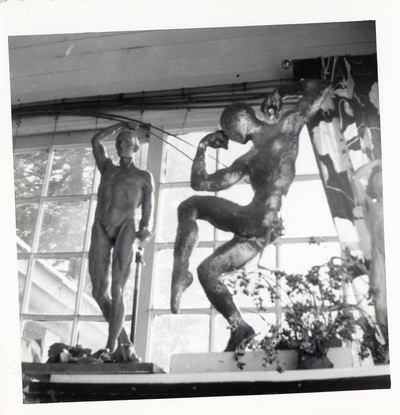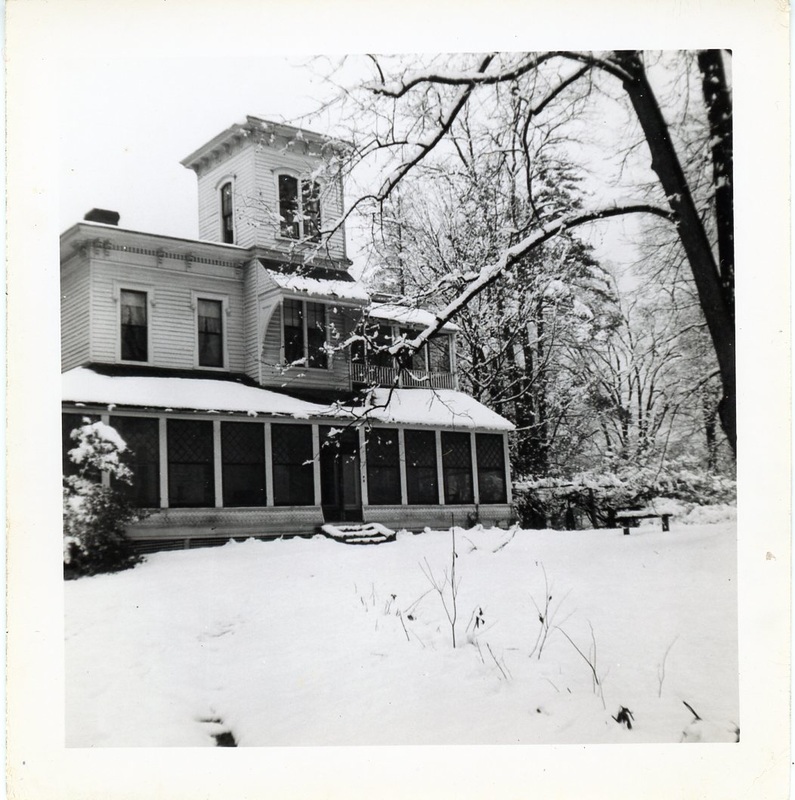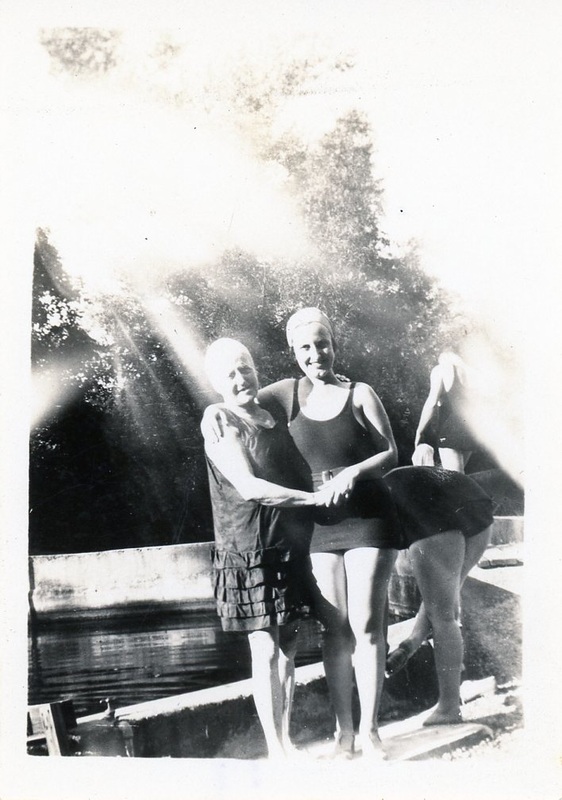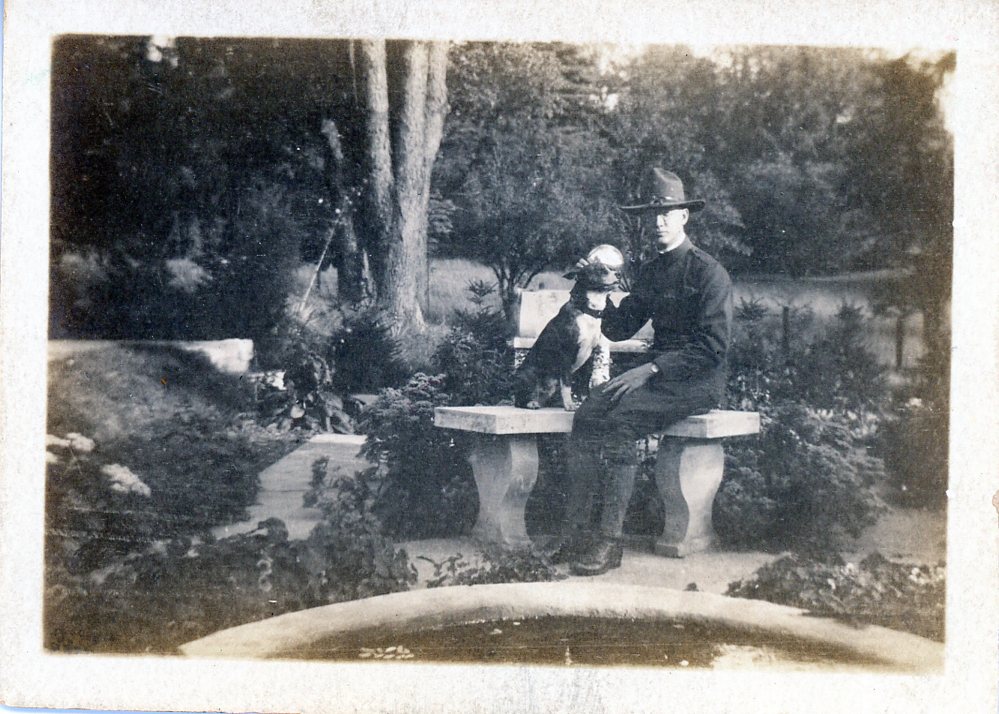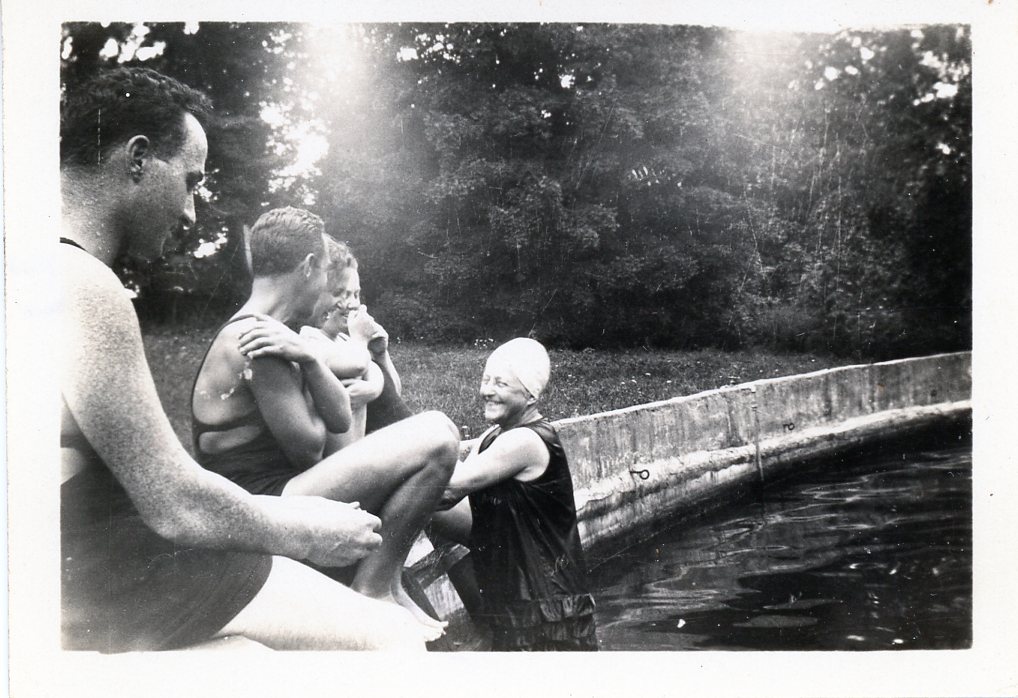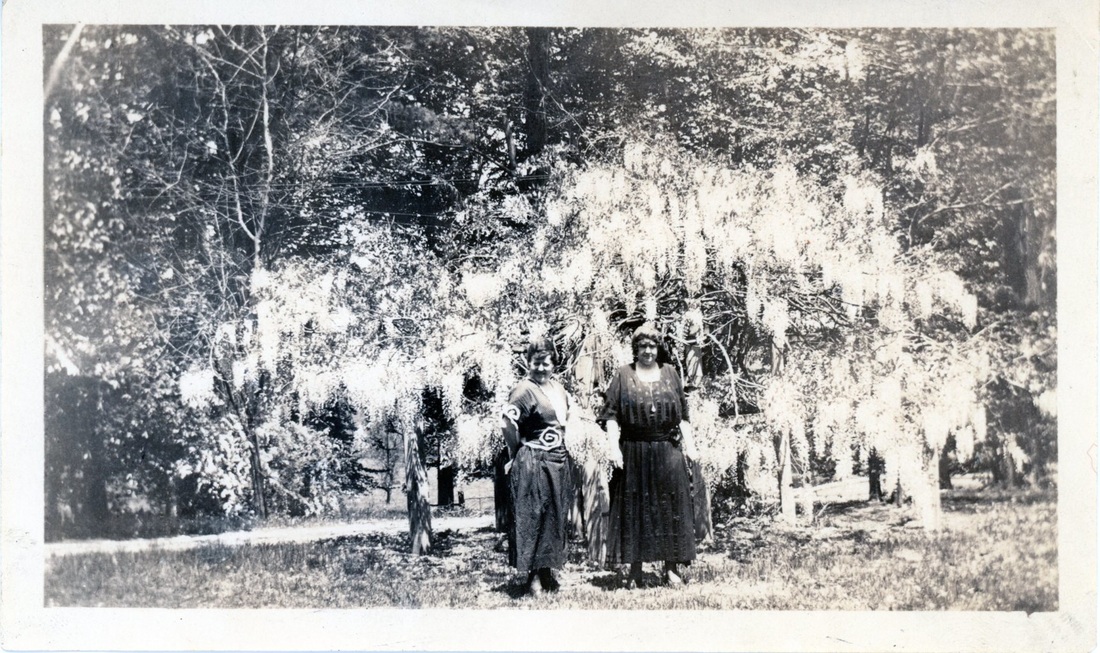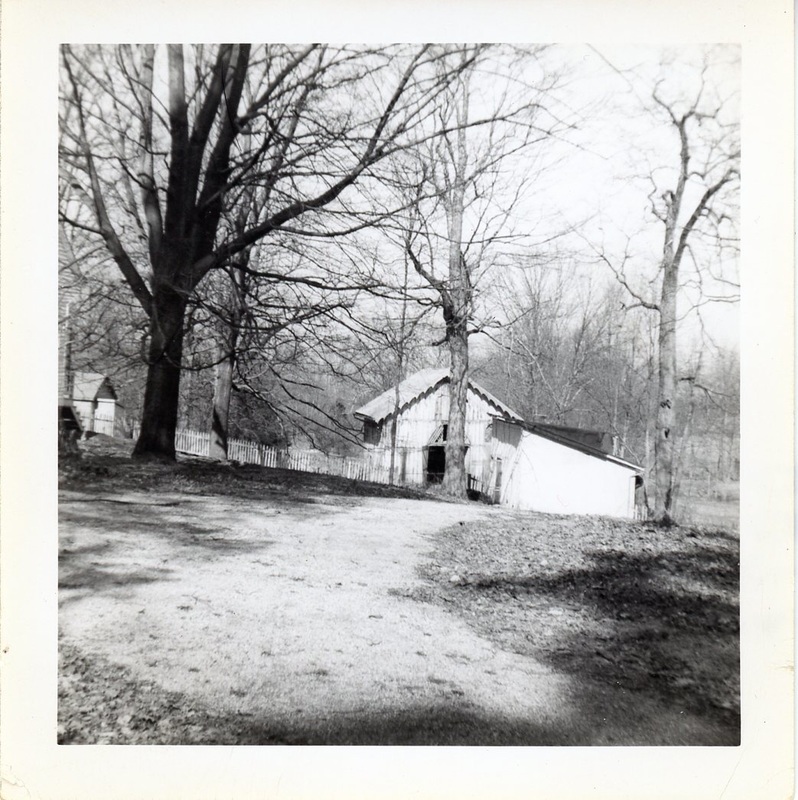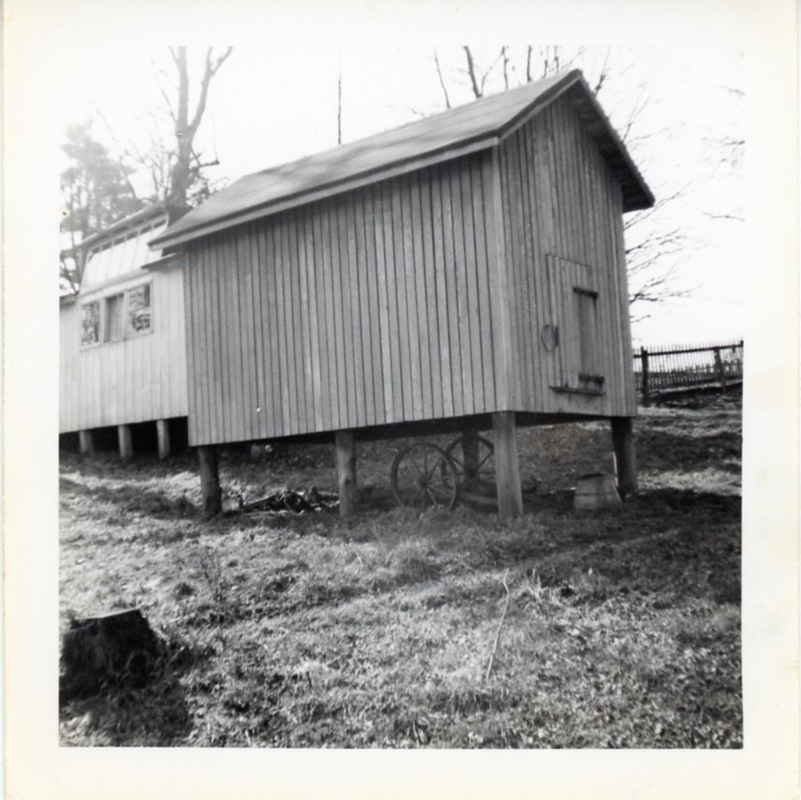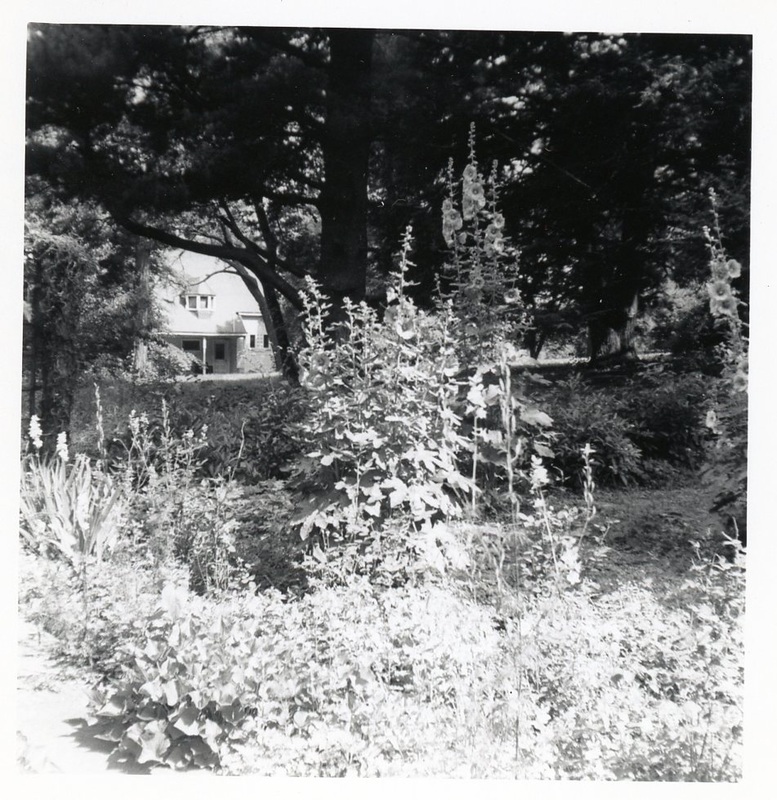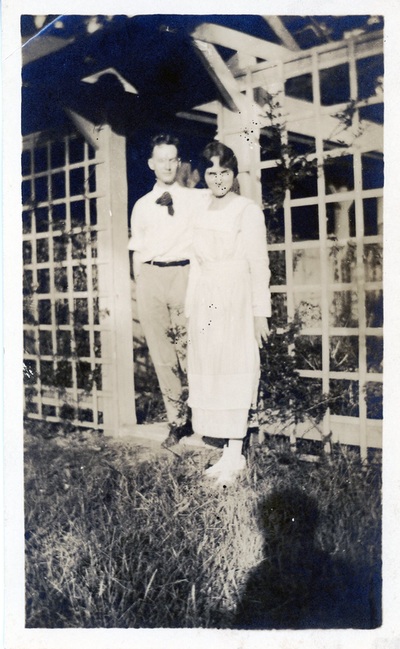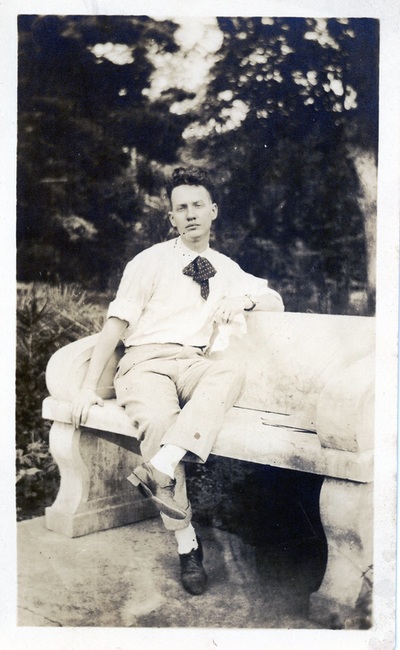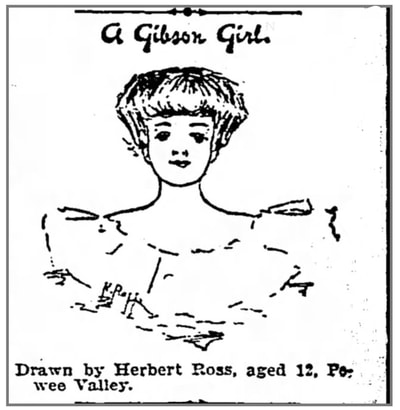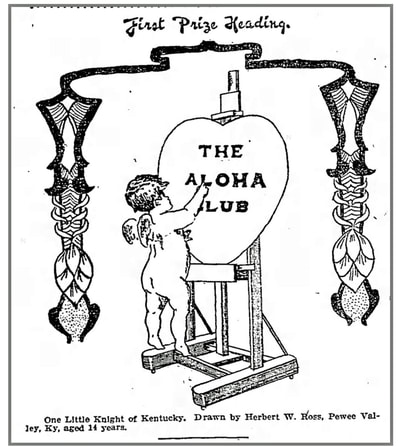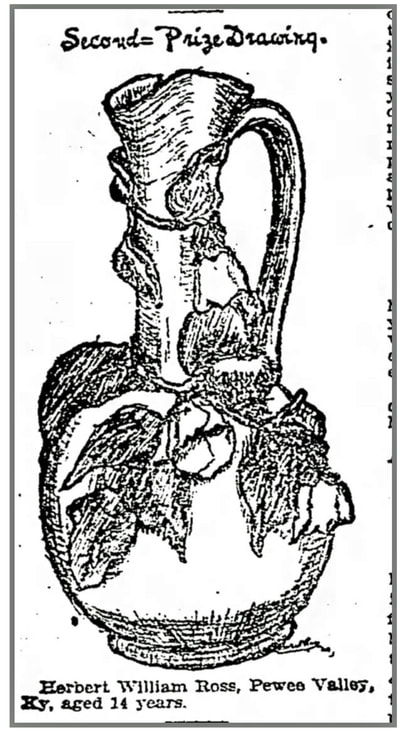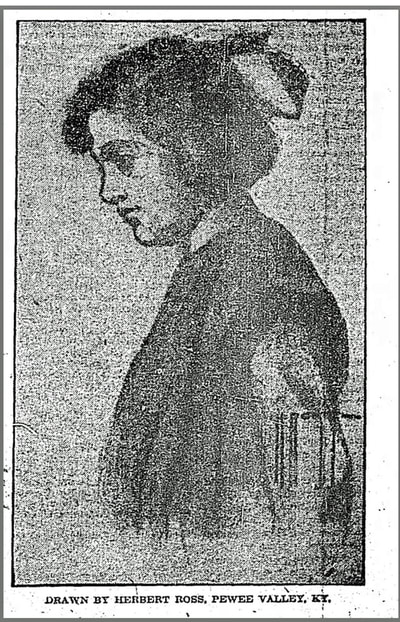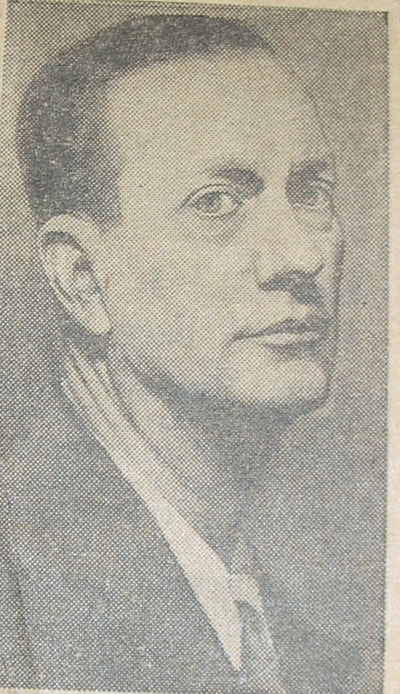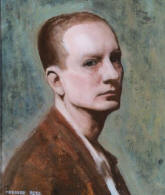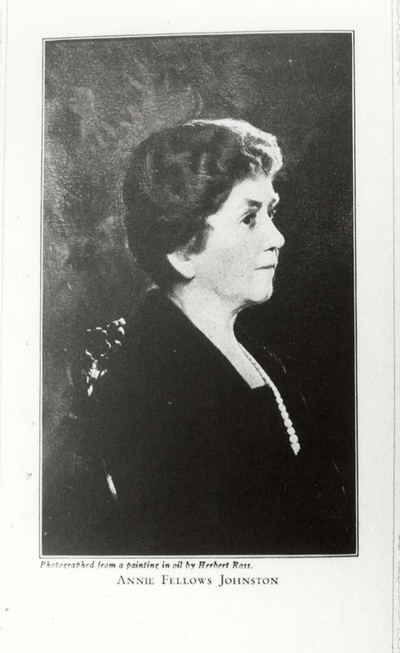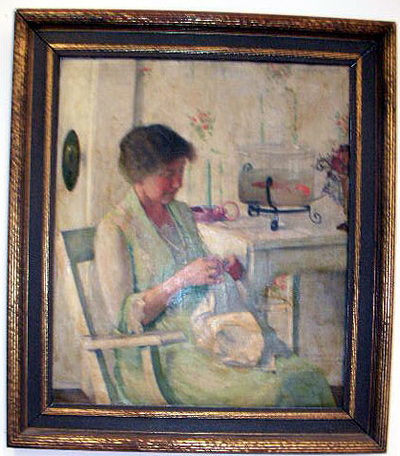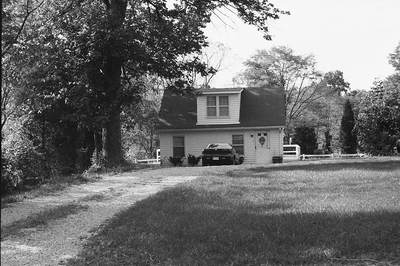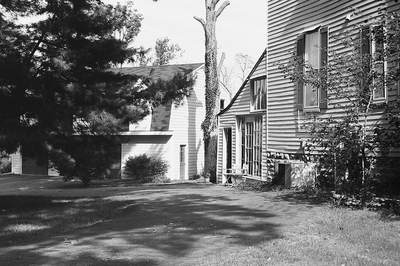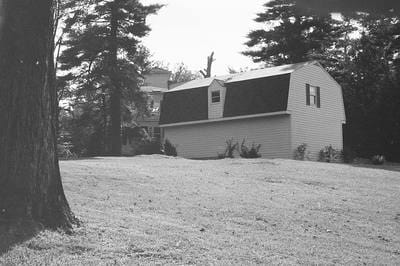Rosswoods: The Van Horne-Ross House
The Van Horne-Ross House once sat on 40 acres at the intersection of Central Avenue and Peace Lane. In 1978, the property was developed to form the Ross Woods subdivision. The house was saved and still sits in its original location.
A Statement of Significance submitted to the National Register of Historic Places provides the following information about the property, the house and its owners:
The Van Horne-Ross House occupies a small portion of what was originally a forty-acre property first developed in 1856 by William H. Walker, a Louisville businessman. Walker’s house burned in 1863. Between 1866, when Walker sold the land, and 1870, when John D. Van Horne bought it, the property changed hands at least three times. It is presumed that Van Horne built the present house, although possibly one of the interim owners, Jonas H. Rhorer and Charles B. Cotton, both Pewee Valley land speculators, or Dr. J.E. Helm was responsible.
A Statement of Significance submitted to the National Register of Historic Places provides the following information about the property, the house and its owners:
The Van Horne-Ross House occupies a small portion of what was originally a forty-acre property first developed in 1856 by William H. Walker, a Louisville businessman. Walker’s house burned in 1863. Between 1866, when Walker sold the land, and 1870, when John D. Van Horne bought it, the property changed hands at least three times. It is presumed that Van Horne built the present house, although possibly one of the interim owners, Jonas H. Rhorer and Charles B. Cotton, both Pewee Valley land speculators, or Dr. J.E. Helm was responsible.
Advertisements for William H. Walker's Restaurant and Liquor Store
The Walker Years: ca. 1856-1870
From 1834 until the 1890s, William H. Walker was a well-known figure in Louisville’s food and beverage industry. In 1834, he opened Louisville’s first tavern off Main Street. As the informal headquarters of Louisville’s Whig party, it offered a generous serving of politics along with libations. By 1845, the tavern’s emphasis had changed to fine food and it was renamed Walker’s Restaurant Hotel. In 1851, it moved to a new building on Third Street, between Main and Market, and was renamed Walker’s Exchange. An ad for the popular eatery appeared on page 3 of the October 18, 1858 “Louisville Courier”:
WALKER’S EXCHANGE
Ne plus ultra
We are daily receiving per American Express Fresh Shell Oysters, Clams, Venison, Squirrels, Prairie Grouses, Bluewing Ducks, Quails, Plovers, Snipes, etc., including all the delicacies of the season, served up in our Restaurant and private apartments or sent to gentlemen’s residences in superior style.
Our Billiard Saloon has been neatly fixed up – new tables with Mike Phelan’s patent cushions, to which we call the attention of our friends and the public.
JOHN CAWEIN & CO., Third Street
N.B. Our bar is supplied with the best Wines, Liquors, Segars, etc. to be procurable in America.
Little is known about William Walker’s Pewee Valley residence, which he named Vinona; however, a story about the fire that destroyed it ran in the “Daily Democrat” on Saturday, December 19, 1863:
Destructive Fire in Pewee Valley. Between 1 and 2 o'clock yesterday morning, the fine residence of W. H. Walker, situated in Pewee Valley, caught fire, and, owing to a high wind which was prevailing at the time, the flames spread with such rapidity that in a short time the entire mansion, which was frame, was wrapped in one sheet of flames, and the family barely had time to escape with their lives. The house with its entire contents was destroyed in almost less time than it takes to relate it. All the furniture, fine paintings, books, clothing, and long-cherished mementoes of friendship and affection were utterly destroyed, nothing being saved from the burning building but a secretary containing private business papers. We did not learn Mr. Walker's exact loss, but understand that the property is partially insured in the Farmers' Mutual Insurance Company of this city. We learn that Mr. Walker intends in the spring to erect a fine stone mansion in the place of the one just destroyed.
That Walker never built his “fine stone mansion” may have been due to his need for capital to fund a new venture in the whiskey trade. In the early 1860s, he and a partner opened a wholesale liquor business at 49 W. Market Street. The establishment specialized in bourbon and other Kentucky whiskies, as well as imported wines and brandies, and appears to have met with financial success. It was not his first foray into the whiskey trade. Walker had partnered at one time, during the 1840s, with Joseph Monks.
However, his desire to live in Pewee Valley may have been greatly diminished by his experience with his former next-door-neighbor at Sunnyside, Walter Newman Haldeman. In 1856, Haldeman had received a federal patronage post as Surveyor of Customs for the Port of Louisville. The post required he have signatures for a $50,000 surety bond. Among the four men who signed the bond on his behalf was William H. Walker.
On September 19, 1861, Haldeman’s newspaper, the “Louisville Morning Courier,” was seized by federal troops because it advocated treason. Haldeman wholeheartedly supported the Southern cause, both in his personal life and in his paper’s editorials. The only reason Haldeman, himself, wasn’t arrested was because he lived in Pewee Valley, 16 miles from Louisville.
William Walker, Noble Butler and others pleaded his case with the commanding Union officer in Louisville at that time --General Anderson -- and won him a reprieve, but after promising to accept the deal his friends had brokered, Haldeman secretly escaped to Bowling Green, Ky., where he offered his pen to the Confederacy. To make matters worse, he funded his flight with $10,000-$12,000 of public funds he stole from his post as surveyor. That left Walker and the others who had signed his surety bond on the hook until Haldeman’s printing plant and Pewee Valley home were sold. It wasn’t until March, 1864, when Sunnyside was auctioned off to the Craig family, that all the money Haldeman stole was recouped.
The Van Horne Years: 1870-1902
John Van Horne purchased the former Walker estate in 1870 and built the frame, two-story home now known as the Van Horne-Ross House. Van Horne was in the telegraph business and served as General Superintendent of the Southern Division, and later Vice President of the Western Union Telegraph Company. Details about his life and career appear in James D. Reid’s “The Telegraph in America: Founders, Promoters and Noted Men,” (Derby Brothers, New York; 1879):
Mr. Van Horne…was born in Centreville, Hunterdon Co., N.J., April 12, 1827. He entered the service at Buffalo, N.Y., in 1850, learning his dots and dashes under the great basso, Jules G. Lumbard, then a telegrapher operator at Buffalo. His first appointment was as a Manager at Ashtabula, O., from whence he graduated to Milan, Masillon, Akron and Sandusky. Early in 1853 he built for Ed. Gibbs the Watkins and Canandaigua section of the Elmira and Canandaigua line, and then went south to join his friend Lumbard at Tuscumbia, Ala., as operator, and afterward, Manager of that office. Here he was met, in 1854, by Dr. Green, who, perceiving beneath his quiet surface a man fitted for more responsible service, appointed him Superintendent, and in a few years thereafter, General Superintendent of the South-western Telegraph Company, with his headquarters in Nashville, Tenn. In his discrete performance of the duties of this new and responsible post, he amply justified the trust reposed in him. He was soon after entrusted with a more extensive and delicate responsibility. The conflict in the Northern and Southern states in 1861, by dividing the property of the company, caused his election as President within the Confederate lines. While thus serving, which he did with much prudence, he rescued, as an act of honor, the stock of Professor Morse (editor’s note: inventor of Morse Code), which had been sequestered and exposed for sale by the Confederate government, by purchase, for Mr. Morse's interest. Had the rebellion been a success, this purchase would have saved Professor Morse's property, which, subsequently, in the general union of the telegraph companies of the country, was represented by an issue of $450,000 Western Union Telegraph Company stock.
John Van Horne’s abilities came to President Dr. Norvin Green’s attention while Green was dealing with preacher problems in eastern Kentucky when line was being laid between Louisville and New Orleans:
Near the town of Russellville, a Baptist preacher, of Campbellite proclivities, and not without talent, held forth semi-occasionally to the denizens of the region between Russellville and Pikeville. The country was wretchedly poor. In 1854 there had been an unusually long drought. In one of his sermons, while depicting with fervid oratory the general cussedness of the race, he exclaimed: “See there, my friends, out along the road that a set of men have dared to interfere with the Almighty’s lightning, and what, my friends, is the consequence? They have robbed the atmosphere of its electricity, the rains are checked, and there has not been a good crop since the wires were put up, and what's more, I believe we never will have any until they are gone.” Curiously enough, a great many intelligent people encouraged and not a few believed the preacher’s philosophy. Immediately, a wild excitement spread. It is difficult, to be sure, to connect iron running through the air with the parched soil and the famished land.
But the very mystery made the belief take root. The wire was the devil’s turnpike, sure- And so down went the poles by the dozen, and away went the wire by the mile, dragged by an angry and excited mob through Russellville, in triumphant avengement of their wrongs. It was difficult to know what to do in such a case. Dr. Green(‘s) …Superintendent, in 1854, was A. E. Trabue, a lively character and a genius. He is known to the craft as the author of “Short Cirkut.” Picking him up at Nashville, on his way south, the first movement made was an aggressive one, and, although the telegraph protection law had been abrogated, about a dozen of the ringleaders were arrested and put in jail at Pikeville. But it did not do much good.
The jail at Pikeville was a kind of chicken coup, which the imprisoned men easily lifted by the corner, upset, and escaped. Trabue now suggested a barbecue, hired a big room, bought a good~sized pig for a roast, a few turkeys and other jim-jams, which need not be mentioned, hired a couple of expert fiddlers and invited everybody to a dance. The whole population turned out, and it looked like a grand success. The mirth and fun “grew fast and furious." Trabue, to be sure, was knocked through the back door, down the hill, by a buxom widow who had danced him blind, but the dance, even with this deduction, was a success.
So long, however, as the rain delayed to fall, the influence of the Baptist preacher's theology kept the hostility to the wires alive. The repairer of the region recommended war. His name was Nipe. He and Trabue concocted a scheme by which Nipe was suddenly to disappear, and his clothes were to be found, torn and bloody. On this evidence of murder, a number of arrests were to be made, and the prospect of a general hanging held out. So thoroughly in earnest was Trabue, that the project was referred to the executive at Louisville. But Nipe's murder was forbidden. It was on this trip that Dr. Green first met his future Superintendent, Van Horne, detecting, beneath his quiet exterior, the qualities which have since distinguished him as a man and officer, and led to his present elevated and responsible trust.
The book also includes a character sketch of John Van Horne:
With manners unusually quiet and unassertive, beneath which smiles a humor as genial as it is pure, Mr. Van Home has developed administrative talents of a high order, and a prudence and sagacity which have inspired the utmost confidence and respect. His most prominent characteristics are seen to best advantage in his correspondence. Some of his letters exhibit the highest type of effective epistolary art. With much felicity in presenting the points of a case, so as to render their meaning unmistakable, there is usually intertwined with it a humor as delicate as it is charming. His correspondence is full of this sunny quality- The comic features of a case spring instinctively before him. In the broad, quiet smile which thus plays upon his language, without either reducing its vigor or lowering its dignity, and in a certain drollery of conversation, he forcibly recalls the memory of President Abraham Lincoln, to whom, in the habitude of his mind, manners and conversation, he hears a not unmarked resemblance.
Like many of his neighbors, Van Horne commuted to his Louisville office from Pewee Valley’s train depot. He served on the City of Pewee Valley’s Board of Trustees for several years, shortly after moving into his new home. His household, according to the 1880 census, included:
An August 11, 1895 article in the Courier-Journal called, “Pewee Valley Homes. Ideal Resting Places Owned by Fortunate Louisville People – Glimpses of Favored Spots,” provided the following description of the Van Horne home:
“…One of the most interesting dwellers in Pewee Valley is Mrs. Van Horn (sic), who has been living there for twenty-five years. The house is commodious, well-arranged and is surrounded by extensive and picturesque grounds. There are forty acres to the tract. The approach to the house is laid out in flower beds, and the long avenue is shaded by a number of grand old forest trees. The Van Horns have done much to establish the reputation of Pewee Valley for refinement. Mrs. Van Horn has a striking personality. Some years ago, Mrs. Van Horn’s family consisted of four young women, all of whom were talented musicians. Of them was Mrs. Cushman Quarrier, the favorite vocalist. As many as thirty young folks were daily visitors at the Van Horn home during the summer.
The place was formerly the property of Dr. Walker, a patent medicine man, who cultivated acres of the herb he used in the decoction of his bitters. Mrs. Van Horn usually has some of her family with her.* The place was bought by her husband on the advice of his physicians, who prescribed fresh air as necessary for good health. They had just gotten located when he was called to New York, where for twenty years he has been Vice President of the Western Union Telegraph Company. Mrs. Van Horn delights to speak of Pewee Valley and the happy days that she has spent here…
*Editor's note: William H. Walker was neither a doctor nor a patent medicine man. The herbs he grew for bitters were most likely for his restaurant and liquor businesses in downtown Louisville.
Mr. Van Horne…was born in Centreville, Hunterdon Co., N.J., April 12, 1827. He entered the service at Buffalo, N.Y., in 1850, learning his dots and dashes under the great basso, Jules G. Lumbard, then a telegrapher operator at Buffalo. His first appointment was as a Manager at Ashtabula, O., from whence he graduated to Milan, Masillon, Akron and Sandusky. Early in 1853 he built for Ed. Gibbs the Watkins and Canandaigua section of the Elmira and Canandaigua line, and then went south to join his friend Lumbard at Tuscumbia, Ala., as operator, and afterward, Manager of that office. Here he was met, in 1854, by Dr. Green, who, perceiving beneath his quiet surface a man fitted for more responsible service, appointed him Superintendent, and in a few years thereafter, General Superintendent of the South-western Telegraph Company, with his headquarters in Nashville, Tenn. In his discrete performance of the duties of this new and responsible post, he amply justified the trust reposed in him. He was soon after entrusted with a more extensive and delicate responsibility. The conflict in the Northern and Southern states in 1861, by dividing the property of the company, caused his election as President within the Confederate lines. While thus serving, which he did with much prudence, he rescued, as an act of honor, the stock of Professor Morse (editor’s note: inventor of Morse Code), which had been sequestered and exposed for sale by the Confederate government, by purchase, for Mr. Morse's interest. Had the rebellion been a success, this purchase would have saved Professor Morse's property, which, subsequently, in the general union of the telegraph companies of the country, was represented by an issue of $450,000 Western Union Telegraph Company stock.
John Van Horne’s abilities came to President Dr. Norvin Green’s attention while Green was dealing with preacher problems in eastern Kentucky when line was being laid between Louisville and New Orleans:
Near the town of Russellville, a Baptist preacher, of Campbellite proclivities, and not without talent, held forth semi-occasionally to the denizens of the region between Russellville and Pikeville. The country was wretchedly poor. In 1854 there had been an unusually long drought. In one of his sermons, while depicting with fervid oratory the general cussedness of the race, he exclaimed: “See there, my friends, out along the road that a set of men have dared to interfere with the Almighty’s lightning, and what, my friends, is the consequence? They have robbed the atmosphere of its electricity, the rains are checked, and there has not been a good crop since the wires were put up, and what's more, I believe we never will have any until they are gone.” Curiously enough, a great many intelligent people encouraged and not a few believed the preacher’s philosophy. Immediately, a wild excitement spread. It is difficult, to be sure, to connect iron running through the air with the parched soil and the famished land.
But the very mystery made the belief take root. The wire was the devil’s turnpike, sure- And so down went the poles by the dozen, and away went the wire by the mile, dragged by an angry and excited mob through Russellville, in triumphant avengement of their wrongs. It was difficult to know what to do in such a case. Dr. Green(‘s) …Superintendent, in 1854, was A. E. Trabue, a lively character and a genius. He is known to the craft as the author of “Short Cirkut.” Picking him up at Nashville, on his way south, the first movement made was an aggressive one, and, although the telegraph protection law had been abrogated, about a dozen of the ringleaders were arrested and put in jail at Pikeville. But it did not do much good.
The jail at Pikeville was a kind of chicken coup, which the imprisoned men easily lifted by the corner, upset, and escaped. Trabue now suggested a barbecue, hired a big room, bought a good~sized pig for a roast, a few turkeys and other jim-jams, which need not be mentioned, hired a couple of expert fiddlers and invited everybody to a dance. The whole population turned out, and it looked like a grand success. The mirth and fun “grew fast and furious." Trabue, to be sure, was knocked through the back door, down the hill, by a buxom widow who had danced him blind, but the dance, even with this deduction, was a success.
So long, however, as the rain delayed to fall, the influence of the Baptist preacher's theology kept the hostility to the wires alive. The repairer of the region recommended war. His name was Nipe. He and Trabue concocted a scheme by which Nipe was suddenly to disappear, and his clothes were to be found, torn and bloody. On this evidence of murder, a number of arrests were to be made, and the prospect of a general hanging held out. So thoroughly in earnest was Trabue, that the project was referred to the executive at Louisville. But Nipe's murder was forbidden. It was on this trip that Dr. Green first met his future Superintendent, Van Horne, detecting, beneath his quiet exterior, the qualities which have since distinguished him as a man and officer, and led to his present elevated and responsible trust.
The book also includes a character sketch of John Van Horne:
With manners unusually quiet and unassertive, beneath which smiles a humor as genial as it is pure, Mr. Van Home has developed administrative talents of a high order, and a prudence and sagacity which have inspired the utmost confidence and respect. His most prominent characteristics are seen to best advantage in his correspondence. Some of his letters exhibit the highest type of effective epistolary art. With much felicity in presenting the points of a case, so as to render their meaning unmistakable, there is usually intertwined with it a humor as delicate as it is charming. His correspondence is full of this sunny quality- The comic features of a case spring instinctively before him. In the broad, quiet smile which thus plays upon his language, without either reducing its vigor or lowering its dignity, and in a certain drollery of conversation, he forcibly recalls the memory of President Abraham Lincoln, to whom, in the habitude of his mind, manners and conversation, he hears a not unmarked resemblance.
Like many of his neighbors, Van Horne commuted to his Louisville office from Pewee Valley’s train depot. He served on the City of Pewee Valley’s Board of Trustees for several years, shortly after moving into his new home. His household, according to the 1880 census, included:
- Mary Van Horne, his wife, age 57
- Nellie Van Horne, daughter, age 23. She was born in 1858 in Cincinnati, Ohio and married William Yates Gholsom Miner on October 11, 1888. She died in 1947.
- John Van Horne, son, age 19.
- Elsy Barber, domestic servant
An August 11, 1895 article in the Courier-Journal called, “Pewee Valley Homes. Ideal Resting Places Owned by Fortunate Louisville People – Glimpses of Favored Spots,” provided the following description of the Van Horne home:
“…One of the most interesting dwellers in Pewee Valley is Mrs. Van Horn (sic), who has been living there for twenty-five years. The house is commodious, well-arranged and is surrounded by extensive and picturesque grounds. There are forty acres to the tract. The approach to the house is laid out in flower beds, and the long avenue is shaded by a number of grand old forest trees. The Van Horns have done much to establish the reputation of Pewee Valley for refinement. Mrs. Van Horn has a striking personality. Some years ago, Mrs. Van Horn’s family consisted of four young women, all of whom were talented musicians. Of them was Mrs. Cushman Quarrier, the favorite vocalist. As many as thirty young folks were daily visitors at the Van Horn home during the summer.
The place was formerly the property of Dr. Walker, a patent medicine man, who cultivated acres of the herb he used in the decoction of his bitters. Mrs. Van Horn usually has some of her family with her.* The place was bought by her husband on the advice of his physicians, who prescribed fresh air as necessary for good health. They had just gotten located when he was called to New York, where for twenty years he has been Vice President of the Western Union Telegraph Company. Mrs. Van Horn delights to speak of Pewee Valley and the happy days that she has spent here…
*Editor's note: William H. Walker was neither a doctor nor a patent medicine man. The herbs he grew for bitters were most likely for his restaurant and liquor businesses in downtown Louisville.
Portraits of John Van Horne, Vice President of Western Union Telegraph Company
John Van Horne retired from Western Union around 1897. An article on Pewee Valley’s Winter Colony, published by the Courier-Journal on November 28, 1897, noted that, “Mr. John Van Horne, who has recently resigned his position as Vice President of the Western Union Telegraph Company, is now permanently located in Pewee…The Van Hornes are at present contemplating improvements and additions to their home which, when completed, will make it one of the handsomest about Louisville…”
He died five years later. His obituary, published in the December 18, 1902 “Courier-Journal” provides a good idea of just how important he was and how much he was esteemed by Western Union:
The funeral of Mr. John Van Horne, former vice president of the Western Union Telegraph Company, was held yesterday afternoon at 2 o’clock at Christ Church Cathedral, and after the reading of the simple and impressive burial service of the Episcopal Church, the body was taken to Cave Hill and laid in its final resting place.
Among those who came to pay the last sad tribute to their friend and colleague were a number of the highest officials of the great company with which he was connected for so many years. All of them started in the work to which their life had been devoted when they were boys and the days of the telegraph as a factor in commercial America had not dawned. It was in these struggles that they came to know John Van Horne, and when the news of Mr. Van Horne’s death reached them, they hurried to this city to pay tribute to him.
The body was brought to Louisville from Pewee Valley yesterday at noon, and was taken from the First-street depot to the church, where it rested until the time set for the funeral.
The services were conducted by the Rev. Dr. Mortimer Benton, and consisted of the reading of the burial service, before which Miss Anita Muldoon sang “Lead Kindly Light.”
When Dr. Benton concluded, Miss Muldoon sang “Nearer, My God, To Thee,” after which the body was taken to the cemetery and interred by the side of Mr. Van Horne’s wife.
There were many floral designs, among them being one sent by Gen. Thomas T. Eckert, formerly president of the Western Union; Mr. James Merrither, formerly general superintendent of the Southern division, and Mr. Robert C. Clowry, the president of the company.
There were handsome designs from the superintendents of the Southern and Western divisions, as well as every official present. Among those present were the following representatives of the Western Union Telegraph Company: T.F. Clarke, vice president, of New York; T.P. Cook, general superintendent of Chicago; F.H. Tubbs, superintendent, and W.J. Lloyd, assistance superintendent of Chicago; T.B. Tree, superintendent, of Richmond, Va.; J. M. Stephens, superintendent, of Atlanta; I.N. Miller, superintendent, of Cincinnati; J. Compton, superintendent, and J. Terhune, assistant superintendent, of Nashville; G.J. Frankel, superintendent, of St. Louis; M.T. cook, secretary to the general superintendent; H.G. sickles and Mr. C.S. Rhodes, superintendent of the Cincinnati division of the Big Four railroad.
The Postal Telegraph Cable Company was represented by J.W. Kates, superintendent, of Richmond, Va., and W.J. Slater, manager of the Louisville office.
His death was reported in newspapers from coast to coast as well as in many trade publications. John Van Horne and his wife, Mary L., who died in 1898, are buried in Cave Hill Cemetery, Section A, Lot 700, Graves 8 and 5. Buried with them are their son, John Douglas Van Horne, who died in 1927, and presumably his son’s wife, Mary K., who died in 1948.
A copy of his will, on file at the Oldham County Courthouse, has been provided by Oldham County Clerk Julie Barr:
I, John Van Horne, of Pewee Valley, Kentucky, make this my last will and testament.
I bequeath to Katie B. Wilson, Fanny B. Quannier ? and G. M. Baker, the sum of three thousand (3000) dollars each. I bequeath to Josephine, widow of L.C. Baker, the sum of two thousand three hundred and fifty (2,350) dollars.
I bequeath to my Grandchildren, Helen Van Horne, John Van Horne, Jr., John Van Horne Miner and Nellie Miner, the sum of two thousand (2,000) dollars each. In addition to the preceding bequests amounting in the aggregate to the sum of nineteen thousand three hundred and fifty (19,350) dollars, I direct that the sum of two thousand (2,000) dollars be set aside and expended from time to time as may be necessary for the maintenance of my brother Cornelius should he survive me.
I direct and bequeath to my daughter, Nellie Van Horne Miner, and to my son, John D. Van Horne, all the residue of my estate of whatever kind and character and wherever situated including the proceeds of the policy of life insurance on my life, which I now hold, and if my aforesaid brother Cornelius should not survive me, including the said sum of two thousand (2000) dollars to provide herein for his maintenance, and if he survives me, including also whatever portion of the said sum may remain unexpended after the payment of his funeral and other proper expenses.
I direct that all the said residue of my estate or the proceeds of its sale thereof or of any portion thereof, shall be divided equally, share and share alike, between my daughter Nellie Van Horne Miner and my son, John D. Van Horne.
I hereby institute and appoint my son, John D. Van Horne, Executor of this my will and direct that no security be required of him as such. Witness my hand to this testament which is in my handwriting, this fourth day of September, in the year nineteen hundred and two.
Jno. Van Horne
He died five years later. His obituary, published in the December 18, 1902 “Courier-Journal” provides a good idea of just how important he was and how much he was esteemed by Western Union:
The funeral of Mr. John Van Horne, former vice president of the Western Union Telegraph Company, was held yesterday afternoon at 2 o’clock at Christ Church Cathedral, and after the reading of the simple and impressive burial service of the Episcopal Church, the body was taken to Cave Hill and laid in its final resting place.
Among those who came to pay the last sad tribute to their friend and colleague were a number of the highest officials of the great company with which he was connected for so many years. All of them started in the work to which their life had been devoted when they were boys and the days of the telegraph as a factor in commercial America had not dawned. It was in these struggles that they came to know John Van Horne, and when the news of Mr. Van Horne’s death reached them, they hurried to this city to pay tribute to him.
The body was brought to Louisville from Pewee Valley yesterday at noon, and was taken from the First-street depot to the church, where it rested until the time set for the funeral.
The services were conducted by the Rev. Dr. Mortimer Benton, and consisted of the reading of the burial service, before which Miss Anita Muldoon sang “Lead Kindly Light.”
When Dr. Benton concluded, Miss Muldoon sang “Nearer, My God, To Thee,” after which the body was taken to the cemetery and interred by the side of Mr. Van Horne’s wife.
There were many floral designs, among them being one sent by Gen. Thomas T. Eckert, formerly president of the Western Union; Mr. James Merrither, formerly general superintendent of the Southern division, and Mr. Robert C. Clowry, the president of the company.
There were handsome designs from the superintendents of the Southern and Western divisions, as well as every official present. Among those present were the following representatives of the Western Union Telegraph Company: T.F. Clarke, vice president, of New York; T.P. Cook, general superintendent of Chicago; F.H. Tubbs, superintendent, and W.J. Lloyd, assistance superintendent of Chicago; T.B. Tree, superintendent, of Richmond, Va.; J. M. Stephens, superintendent, of Atlanta; I.N. Miller, superintendent, of Cincinnati; J. Compton, superintendent, and J. Terhune, assistant superintendent, of Nashville; G.J. Frankel, superintendent, of St. Louis; M.T. cook, secretary to the general superintendent; H.G. sickles and Mr. C.S. Rhodes, superintendent of the Cincinnati division of the Big Four railroad.
The Postal Telegraph Cable Company was represented by J.W. Kates, superintendent, of Richmond, Va., and W.J. Slater, manager of the Louisville office.
His death was reported in newspapers from coast to coast as well as in many trade publications. John Van Horne and his wife, Mary L., who died in 1898, are buried in Cave Hill Cemetery, Section A, Lot 700, Graves 8 and 5. Buried with them are their son, John Douglas Van Horne, who died in 1927, and presumably his son’s wife, Mary K., who died in 1948.
A copy of his will, on file at the Oldham County Courthouse, has been provided by Oldham County Clerk Julie Barr:
I, John Van Horne, of Pewee Valley, Kentucky, make this my last will and testament.
I bequeath to Katie B. Wilson, Fanny B. Quannier ? and G. M. Baker, the sum of three thousand (3000) dollars each. I bequeath to Josephine, widow of L.C. Baker, the sum of two thousand three hundred and fifty (2,350) dollars.
I bequeath to my Grandchildren, Helen Van Horne, John Van Horne, Jr., John Van Horne Miner and Nellie Miner, the sum of two thousand (2,000) dollars each. In addition to the preceding bequests amounting in the aggregate to the sum of nineteen thousand three hundred and fifty (19,350) dollars, I direct that the sum of two thousand (2,000) dollars be set aside and expended from time to time as may be necessary for the maintenance of my brother Cornelius should he survive me.
I direct and bequeath to my daughter, Nellie Van Horne Miner, and to my son, John D. Van Horne, all the residue of my estate of whatever kind and character and wherever situated including the proceeds of the policy of life insurance on my life, which I now hold, and if my aforesaid brother Cornelius should not survive me, including the said sum of two thousand (2000) dollars to provide herein for his maintenance, and if he survives me, including also whatever portion of the said sum may remain unexpended after the payment of his funeral and other proper expenses.
I direct that all the said residue of my estate or the proceeds of its sale thereof or of any portion thereof, shall be divided equally, share and share alike, between my daughter Nellie Van Horne Miner and my son, John D. Van Horne.
I hereby institute and appoint my son, John D. Van Horne, Executor of this my will and direct that no security be required of him as such. Witness my hand to this testament which is in my handwriting, this fourth day of September, in the year nineteen hundred and two.
Jno. Van Horne
The Gates to the Van Horne-Ross House and the Driveway to the House Before the Property was Subdivided
The Ross Years: 1903-1978
In 1903, the Van Horne house was sold to the “... William Ross family, who intended to use it for a summer home but soon moved there permanently,” according to the Statement of Significance submitted to the National Register of Historic Places. The Statement of Significance went on to explain:
William Ross, an executive with a Louisville seed company, served intermittently on the Pewee Valley City Council from 1904 to 1908. A son, Herbert Ross who continued to live in the house until the late 1970s, was an accomplished painter who studied in Chicago, New York and Paris with other artists of note.
The Ross Family
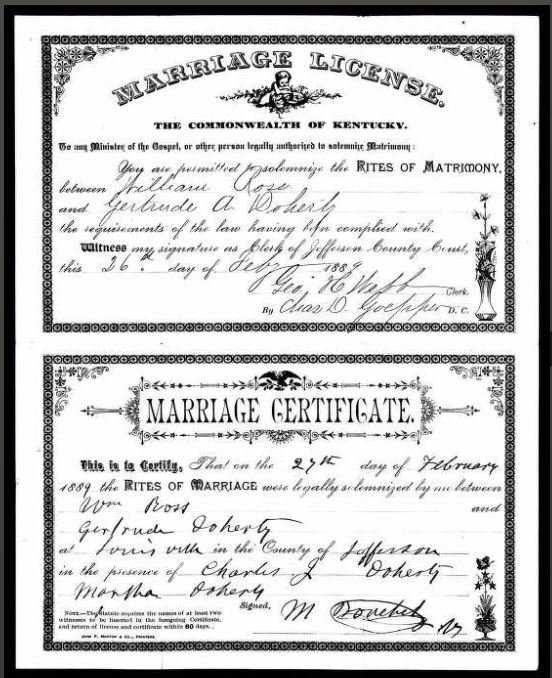 Marriage license and certificate for William and Gertrude Ross, February 1889
Marriage license and certificate for William and Gertrude Ross, February 1889
William Ross (May 6, 1859-December 11, 1922) founded the Ross Seed Company in Louisville in 1895. Four years later, on February 27, 1889, he married Gertrude Doherty. By 1900, the Rosses were living at 1805 First Street and had four children:
While William's seed company flourished, his marriage to Gertrude Doherty did not. Despite his Catholic faith, at some point around 1915, he retired from his company and divorced his wife. In 1916, he moved to San Diego, California. The 1920 census shows he was living on West Point Loma Linda Boulevard with his 32-year-old married niece Bettie Jane Milby. He died there on December 11, 1922. A notice of his sudden death ran in the Courier-Journal the next day:
William Ross (May 6, 1859-December 11, 1922) founded the Ross Seed Company in Louisville in 1895. Four years later, on February 27, 1889, he married Gertrude Doherty. By 1900, the Rosses were living at 1805 First Street and had four children:
- Genevieve Ross Cheschier (December 3, 1889-November 8, 1975), who married Alfred Smith Cheschier in 1907 and moved into a home next to her parents' estate in Pewee Valley
- Charles Doherty Ross (June 15, 1892-August 14, 1977), who married Ada Lewis Hart and later became chairman of the Ross Seed Company and Chairman of the Board of Anchorage, Ky. -- essentially the mayor -- from January 3, 1938 until January 6, 1956;
- Herbert William Ross (1895-1989), the artist, who never married; and
- Alice Ross (1896- ), who never married.
While William's seed company flourished, his marriage to Gertrude Doherty did not. Despite his Catholic faith, at some point around 1915, he retired from his company and divorced his wife. In 1916, he moved to San Diego, California. The 1920 census shows he was living on West Point Loma Linda Boulevard with his 32-year-old married niece Bettie Jane Milby. He died there on December 11, 1922. A notice of his sudden death ran in the Courier-Journal the next day:
Ex-Louisville Business Man
Dead in California
William Ross, 65 years old, founder of the Ross Seed Company, and president until his retirement in 1915, died at 7:30 o'clock yesterday morning at Ocean Beach, Calif., his home, according to word received last night by his son, Charles P. (sic) Ross.
Mr. Ross was a native of Louisville. He organized the seed company and was active in its administration until his retirement. Charles P. (sic) Ross left for Ocean Beach last night to make the funeral arrangements.
Besides Charles P. (sic) Ross, Mr. Ross is survived by another son, Herbert, of Paris, France, and two daughters, Mrs. A.S. Chescheir and Miss Alice Ross, both of Pewee Valley. Mr. Ross is also survived by his widow, from whom he is divorced.
According to the December 15, 1922 issue of Seed World magazine (Volume 12, Scranton Gillette Communications, Inc.), the cause of death was heart trouble.
A few months later, Charles commissioned a spectacular monument for the Ross family. The March 15, 1923 Middlesboro Daily News (Middlesboro, Ky.) reported:
EGYPTIAN TOMB TO BE
BUILT IN LOUISVILLE
A massive Egyptian tomb, patterned after that of (unreadable) Tutankhamen, which was opened recently at Luxor, is to be built by a Louisville firm for the family of William Ross, founder of Ross Seed Company. An order for the tomb has been placed by Charles D. Ross, Louisville capitalist, as a memorial to his father.
More than a year will be required for construction of the tomb, on which work will begin around May 1. Data necessary for an accurate design is being obtained from Egypt, according to an official of the company which was awarded the contract.
The mausoleum is located at Calvary Cemetery in Louisville, which was established in 1921. William's body was interred there on October 30, 1923, according to cemetery records.
Dead in California
William Ross, 65 years old, founder of the Ross Seed Company, and president until his retirement in 1915, died at 7:30 o'clock yesterday morning at Ocean Beach, Calif., his home, according to word received last night by his son, Charles P. (sic) Ross.
Mr. Ross was a native of Louisville. He organized the seed company and was active in its administration until his retirement. Charles P. (sic) Ross left for Ocean Beach last night to make the funeral arrangements.
Besides Charles P. (sic) Ross, Mr. Ross is survived by another son, Herbert, of Paris, France, and two daughters, Mrs. A.S. Chescheir and Miss Alice Ross, both of Pewee Valley. Mr. Ross is also survived by his widow, from whom he is divorced.
According to the December 15, 1922 issue of Seed World magazine (Volume 12, Scranton Gillette Communications, Inc.), the cause of death was heart trouble.
A few months later, Charles commissioned a spectacular monument for the Ross family. The March 15, 1923 Middlesboro Daily News (Middlesboro, Ky.) reported:
EGYPTIAN TOMB TO BE
BUILT IN LOUISVILLE
A massive Egyptian tomb, patterned after that of (unreadable) Tutankhamen, which was opened recently at Luxor, is to be built by a Louisville firm for the family of William Ross, founder of Ross Seed Company. An order for the tomb has been placed by Charles D. Ross, Louisville capitalist, as a memorial to his father.
More than a year will be required for construction of the tomb, on which work will begin around May 1. Data necessary for an accurate design is being obtained from Egypt, according to an official of the company which was awarded the contract.
The mausoleum is located at Calvary Cemetery in Louisville, which was established in 1921. William's body was interred there on October 30, 1923, according to cemetery records.
Ross Seed Company
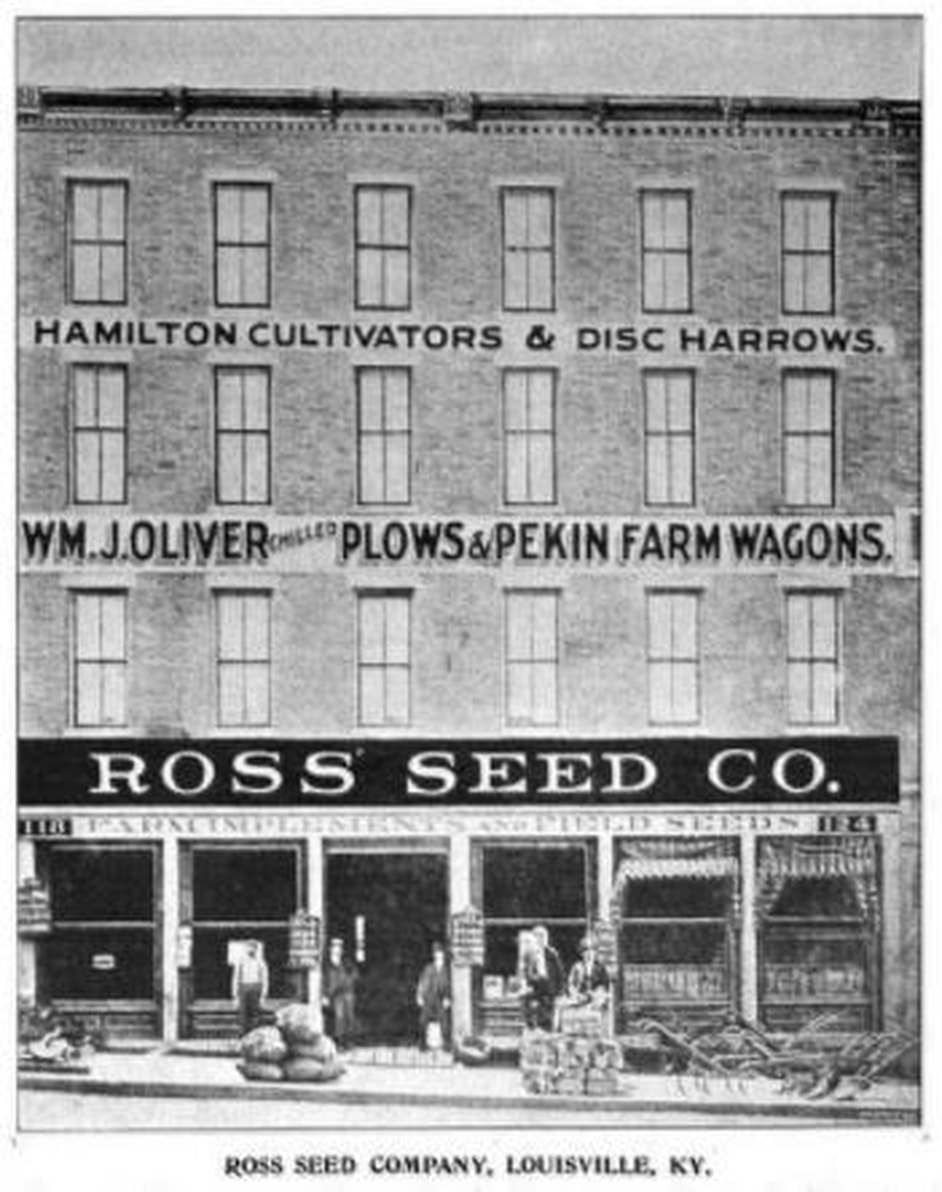
The Ross Seed Company's building in 1911, when it was located at 118-124 N. Second Street. The business later moved to Lytle Street before construction of the George Rogers Clark Bridge (better known as the Second Street Bridge) started in Louisville in 1928. From "The Implement Age" magazine (Vol 38, 1911), Saturday, September 2, 1911, pg. 25.
William Ross stayed at the helm until his retirement in 1915. Four years before he left Ross Seed and divorced his wife, an in-depth profile of his firm appeared in The Implement Age magazine, Volume 38, page 25:
The Ross Seed Company
One of the best-known wholesale implement firms in the South is the Ross Seed Company, of Louisville, which has a big house at 118-124 North Second street, where it has been quartered for the past fifteen years. The company distributes the products of some of the best known manufacturers in the country to the Kentucky trade, and has developed a business which is increasing steadily, attesting both to the merits of the line handled by the house and to the clever management of the business.
The Ross Seed Company has been in business for the past thirty years, as far as the implement trade is concerned, and the seed business has been running even a longer time. The concern found that the two lines went together well and has demonstrated that implements can be handled to advantage in connection with the main line.
The leading lines carried by the Ross Company are W.J. Oliver plows, Pekin wagons, Lone & Alstetter cultivators and disc harrows, and Thompson seeders. A large stock is carried at all times, ample quarters in this connection being provided, as the company has a four-story building, 100 by 150 feet, and is able to ship goods as soon as the order is received. The prompt service which has been given is one of the strong points of the Ross business.
The members of the firm are William Ross, Charles D. Ross and A. S. Chescheir. The two traveling men who represent the house on the road are W.A. Renick, who handles western Kentucky, and Charles D. Ross, who is in charge of the eastern end of the state.
“Kentucky has been prospering the past few years,” said William Ross, head of the firm, in discussing the situation recently, “and this house, as well as others in the implement line, has been prospering accordingly. The farmers are learning to diversify their crops, and not to depend on one line too much. They are not devoting their attention so exclusively as before to tobacco, and the result is that larger crops of corn, wheat and other staples are being raised. This has meant a greater possibility of trade for the implement man, and the possibility has been developed.”
William's son Charles and son-in-law Alfred Chescheir weren't the only family members to work for Ross Seed. At one time, he employed his nephew, A.J. Ross, as cashier. The May 9, 1906 Courier-Journal reported:
A.J. ROSS DIES IN
PRIME OF LIFE.
____________________________
Young Man with Bright Prospects
Succumbs to Typhoid
Fever
A.J. Ross, thirty-five years of age, died of typhoid fever yesterday afternoon at 3:30 o'clock at his home, 1522 Garvin Place. He leaves a widow, who was Miss Bell, daughter of Hillary Belle, of Fairfield, Ky. He is also survived by his parents, Mrs. and Mrs. Alphonso Ross. Alfronso Ross is superintendent of the McHenry Coal Company.
Mr. Ross was a native of Louisville, was graduated from St. Xavier's College with honors, having won ten premiums. He was considered one of the brightest scholars in Louisville. At the time of his death he was connected with the Ross Seed Company as cashier. J. Hunter Ross, Bond Recorder, is a cousin.
1911 The Implement Age Magazine Ads
The dissolution of William's and Gertrude's marriage was not without rancor and that rancor spilled over to the company. In 1915 William didn't simply retire from the company he'd built. He sold out his interest to his son and son-in-law for $35,000 -- the equivalent of about $847,000 today. The company also agreed to take over his ex-wife's alimony payments. The agreement meant he'd never need to deal with Gertrude again.
William, however, appears to have been less than pleased with the settlement and proceeded to work against the Ross Seed Company's interests, possibly attempting to set up a competing firm and steal his former company's customers. Things got so ugly his son and son-in-law took him to court for breach of contract. The March 10, 1916 Courier-Journal reported:
CHARGES FORMER PARTNER
WITH BREACH OF CONTRACT
__________________________________
Judgement for $15,000 and Restrain-
ing Order Asked by Ross
Seed Company
___________
Breach of contract in connection with his withdrawal from the Ross Seed Company is alleged in a petition filed in Circuit Court yesterday against William Ross by Charles D. Ross and Alfred S. Chescheir, remaining members of the firm, in which they ask for a judgment for $15,000 damages and a restraining order enjoining the defendant from using the name "Will Ross" in connection with the seed business and also from soliciting directly or indirectly any of the trade of the Ross Seed Company, which was owned and enjoyed by the Ross Seed Company on and prior to July 19, 1915, the date of withdrawal of the defendant from the firm.
It is alleged in the petition that on the date of the dissolution of the partnership the plaintiffs paid to the defendant $35,000 in cash for his interest in the business and for his good will and agreed further to assume the payment of alimony to Gertrude A. Ross, former wife of William Ross; that in consideration of the written contract the defendant agreed not to use the name of the Ross Seed Company nor any similar name which might be reasonably expected to deceive or mislead the public into the belief that the person using such name is connected with the continuing partners doing business under the name of the Ross Seed Company. It is alleged that the contract has been violated on numerous occasions since it was entered into and the money paid to the defendant, and that unless enjoined the defendant will work great and irreparable injury to the plaintiffs, the continuing partners in the business.
The lawsuit may have precipitated William's move to Ocean Beach in 1916. How long he remained estranged from his children is unknown. Charles's decision to have the grandiose mausoleum built at Calvary Cemetery after his father died may have been the result of guilt over how their relationship ended. Charles also decided to sell out of the company in 1920, according to a notice that ran in the March 25 Courier-Journal.
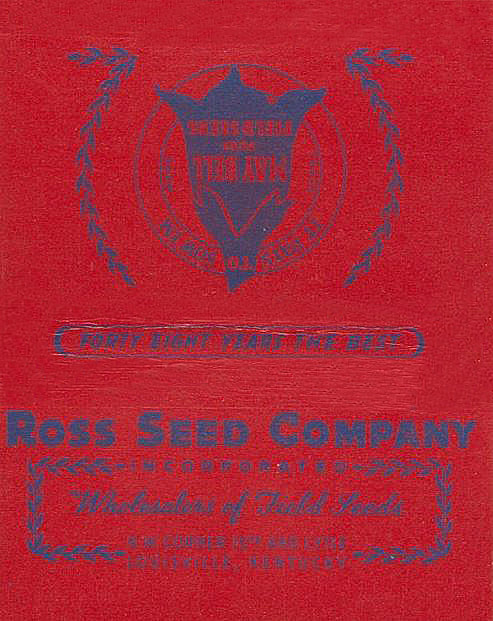 Ross Seed Company matchbook cover, ca. 1943.
Ross Seed Company matchbook cover, ca. 1943.
His retirement, however, was short-lived. According to his obituary (Courier-Journal, August 15, 1977), Charles operated his father's old company for 50 years and did quite well for himself. He lived in Anchorage, Ky., just a few miles east of Pewee Valley, where he owned a huge home:
Former mayor
of Anchorage
C.D. Ross dies
Charles D. Ross, 85, former Mayor of Anchorage for 19 years and retired owner of the Ross Seed Co., died at 12:45 yesterday at the Christopher East Nursing Home. He lived at 306 Norbourne Blvd.
He was Mayor of Anchorage from 1940 to 1959. (Editor's note: According to Peg Revell, archivist for the City of Anchorage, he was actually Chairman of the Board from January 3, l938 until January 6, 1956. The position's title was changed to mayor after Ross' death.)
He had operated the seed company for fifty years and was a past president of the American Seed Trade Association and a member of the Kentucky Seed Trade Association.
He was also a past member of the board of directors of the Volunteers of America, was the oldest living member of the Pendennis Club, a charter member of the Owl Creek Country Club and a member of the Filson Club.
He was a Navy veteran of WWI and a member of Company A of the Kentucky National Guard.
Survivors include a son, William H. Ross; three daughters, Mrs. Jane R. Mercke of Purcellville, Va., Mrs. Charles F. Keown of Berkeley, Calif., and Miss Elizabeth Ann (Betsy) Ross; a brother, Herbert Ross; eight grandchildren and two great-grandchildren ...
His son-in-law, C. Clarence Mercke, Jr., served as vice president of Ross Seed Company for some years. When Charles retired about 1961, Mercke moved the company to Virginia and became owner and president of the Ross Seed Company of Virginia. Clarence Mercke died three-and-a-half years later at age 45.
Former mayor
of Anchorage
C.D. Ross dies
Charles D. Ross, 85, former Mayor of Anchorage for 19 years and retired owner of the Ross Seed Co., died at 12:45 yesterday at the Christopher East Nursing Home. He lived at 306 Norbourne Blvd.
He was Mayor of Anchorage from 1940 to 1959. (Editor's note: According to Peg Revell, archivist for the City of Anchorage, he was actually Chairman of the Board from January 3, l938 until January 6, 1956. The position's title was changed to mayor after Ross' death.)
He had operated the seed company for fifty years and was a past president of the American Seed Trade Association and a member of the Kentucky Seed Trade Association.
He was also a past member of the board of directors of the Volunteers of America, was the oldest living member of the Pendennis Club, a charter member of the Owl Creek Country Club and a member of the Filson Club.
He was a Navy veteran of WWI and a member of Company A of the Kentucky National Guard.
Survivors include a son, William H. Ross; three daughters, Mrs. Jane R. Mercke of Purcellville, Va., Mrs. Charles F. Keown of Berkeley, Calif., and Miss Elizabeth Ann (Betsy) Ross; a brother, Herbert Ross; eight grandchildren and two great-grandchildren ...
His son-in-law, C. Clarence Mercke, Jr., served as vice president of Ross Seed Company for some years. When Charles retired about 1961, Mercke moved the company to Virginia and became owner and president of the Ross Seed Company of Virginia. Clarence Mercke died three-and-a-half years later at age 45.
In 1963, the Volunteers of America bought the old Ross Seed Company building at 1501 Lytle for $65,000.
House Interiors when the Ross Family Was in Residence
Gertrude, Herbert and Alice Ross in Pewee Valley
|
Photos from the Ross Family Collection,
Courtesy Bethany Major |
Phyllis Hinton, the wife of developer Bill Hinton, who bought the Ross estate and turned it into the Rosswoods subdivision in 1978, visited Herbert Ross while he was living at 800 Building in downtown Louisville. She wrote the following oral history of the Ross family, based on their conversations:
The Ross family purchased the home on Central Avenue in 1903. Mr. Ross said that their family’s primary residence was on 4th street in Old Louisville – they used the Pewee house during the summer. This, from what I understand, was not unusual at the time. The house had tall ceilings and was cooler in the summertime. Mrs. Ross (Gertrude), their mom, even put a swimming pool, of some sort, in for the four Ross children. Their names were Charles, Genevieve, Alice and Herbert. The pool was located where the green house is across the street (editor’s note: at 137 Rosswood Drive). Shortly after purchasing the home, the parents divorced and Mrs. Ross decided to make the Pewee Valley home their permanent residence. There was a rail line that came out to several locations in Oldham County from downtown Louisville in those days, so they weren’t entirely removed from the city. The structures on the “gentleman’s farm” consisted of the main house, a barn located approximately where Rosswood Dr. turns, a lean-to shed used to house automobiles, which had no doors, an artist’s studio behind the garage structure, a two-story guest house, that must have been very nice when it was built, but had to be destroyed because it had been vandalized. The small guest house was built by the second family to live on the farm named Van Horne. They built it so their married daughter and her family could visit. There was also something remaining of a formal garden close to the wooded area in the back of the property. When the Ross children were growing up, Mrs. Ross would hire a band to come and play so the teenage young people could dance. Mrs. Ross was very protective of her children – she didn’t want them to leave the area. She bought land next door (off Peace Lane) for her oldest daughter, Genevieve, to build a home when she got married. It is the white-columned colonial home you see on Peace Lane. Gertrude apparently got into a feud with her son-in-law and he was not allowed to come over, and she would meet the grandchildren in the garden to bring them over to her house. The two oldest children, Charles D. and Genevieve, married, but Alice and Herbert never did. Gertrude saw that Herbert was very artistically inclined. She made sure he got the best training possible, even sending him to France to study. His specialty was portrait painting. He told me that he fell in love in France with a woman. I don’t know much about her. She may have been a patron of his, or an admirer of his work. When she spurned him, he was crushed, and even when he spoke about it to me all those years past, you could see the emotion. I was never certain how Alice and Herbert survived, but I believe there must have been a family trust. Herbert’s father was one of the founders of the Ross Seed Company, then in downtown Louisville. After the divorce, he moved to California and I don’t know if he had any contact with the children. Charles, I believe, lived in Anchorage. (Editor’s note: In 1929, Ross Seed President Charles Ross turned a ca. 1871 Gothic Revival cottage in Anchorage into a 10,000-square-foot Colonial Revival mansion. It’s known as Bellewood today. It was later owned by Kingsford Charcoal founder Owen Pyle and is currently owned by marketing and public relations mogul and proprietor of the Village Anchor Pub & Roost, Kevin Grangier. Charles Ross served as chairman of the Anchorage Board of Trustees from 1938 to 1956.) When I met Herbert he was living in the 800 Building in downtown Louisville. He was a delightful man and I visited with him from time-to-time. He had no regrets and no cares. He had taken good care of his ailing sister, Alice. They lived there in Rosswood until her death. She was the reason the elevator was installed. The house was in deplorable condition when we looked at it. It had not been lived in for some time. There was even food in the refrigerator. Mr. Ross passed away in 1989. Gertrude Ross died on July 5, 1953 at Pewee Valley Hospital. Her obituary ran in the next day's Courier-Journal: Mrs. Gertrude Ross, 84, Mother of Seed Man, Dies Mrs. Gertrude Doherty Ross, mother of Charles D. Ross, Anchorage, president of the Ross Seed Company, 1501 Lytle, died at 7:45 a.m. yesterday at Pewee Valley Hospital. Mrs. Ross, who had lived in Pewee Valley for 50 years, was 84. She had been ill for four years. A native of Madison, Ind., she was a former member of the Arts Club of Louisville and was a member of St. Aloysius Catholic Church. Her husband, William Ross, founder of the seed company, died in 1922. Other survivors are a son, Herbert William Ross, Pewee Valley; two daughters, Mrs. Genevieve Chescheir, Anchorage, and Miss Alice Ross, Pewee Valley; six grandchildren and seven great-grandchildren. The funeral will be 9 a.m. tomorrow at the residence and at St. Aloysius Catholic Church. Burial will be in Calvary Cemetery. Though many years had passed since the 1915 divorce, Gertrude and her children never seemed to accept it. No mention of the divorce was made in her obituary, and like it or not, William and Gertrude are spending eternity together in the family mausoleum at Calvary Cemetery. Phyllis Hinton was correct in surmising that Alice and Herbert were left with a trust to provide for their day-to-day living expenses. Gertrude's Last Will and Testament, courtesy of Oldham County Clerk Julie Barr, made sure her children were cared for financially the rest of their lives: I, Gertrude D. Ross, a resident of Pewee Valley, Oldham County, Kentucky, being of sound mind and memory, do make, publish and declare this my last Will and Testament, hereby revoking any and all wills by me heretofore made. 1. I direct that my just debts and the expenses of my funeral be paid as soon as convenient after my death. 2. I give, bequeath and devise to my daughter Alice Ross and my son Herbert Ross my residence at Pewee Valley, Kentucky, and all the household furnishings contained therein. 3. I give and bequeath to each of my four children, namely Charles D. Ross, Herbert Ross, Alice Ross and Genevieve Ross Cheshire, the sum of One Thousand dollars ($1,000) which sum shall be paid to each of my said children within one month, or as soon as may be, after my death. |
4. All the rest and residue of the property, real, personal and mixed, which I may own or have the right to dispose of at my death, including the corpus of a trust estate which was created by my brother, Charles Doherty, for my benefit and is now held by the United States Trust Company, of Louisville, Kentucky trust nevertheless for the following uses and purposes:
The net income from the trust estate shall be paid by my Trustee in equal shares, at suitable times, to my daughter Alice Ross, and my son, Herbert Ross, during their joint lives. Upon the death of either of my said children the entire income from the trust estate will be paid to the survivor, so long as the survivor shall live.
Upon the death of the survivor of my said two children, Alice Ross and Herbert Ross, the trust estate shall be divided into two equal portions. One of said portions shall be paid over to my son Charles Ross free and clear of all trusts. The other portion of the trust estate shall be retained by my Trustee and the income therefrom paid to my daughter, Genevieve Ross Cheshire, or upon the death of the survivor of my two children, Alice Ross and Herbert Ross in the event my daughter Genevieve Ross Cheshire shall not survive the survivor of my two said children, the half of the trust estate here set apart for the benefit of my daughter, Genevieve Ross Cheshire shall be paid over and distributed per stirpes among the issue of my daughter, Genevieve Ross Cheshire, who are living at the time of the distribution.
Should either Alice Ross, Herbert Ross or Genevieve Ross Chesheir, prior to the death of the survivor of Alice Ross and Herbert Ross, be in need of extra funds to take care of the expense incident to a serious illness, my Trustee shall have the right, in its discretion, to pay to such child, out of the principal of the trust estate, such funds as may be necessary for this purpose, but not more than $5,000.00 shall be paid on this account to any one of my said children, and my Trustee, shall be sole judge of the necessity of making such payment.
5. The Trustee herein appointed shall hold and manage the trust estate herein created and shall invest and reinvest the same in such stocks, bonds, securities and real estate as it may deem proper and suitable for the investment of trust funds. The trustee is granted full power to rent, sell, lease, mortgage, exchange or otherwise dispose of any or all of the property in the trust fund as it may deem proper.
6. I hereby appoint and nominate the United States Trust Company, of Louisville, Kentucky, its successors and assigns, as the Executor of this, my last will, and as trustee hereunder. My said Executor shall have power at its discretion to do any and all thing necessary for the complete administration of my estate, including the power to sell at public or private sale and without order of court any real or personal property belonging to my estate and to compound, compromise or otherwise settle or adjust any and all claims, charges, debts, and demands whatsoever against or in favor of my estate as fully as I could do if living.
In Witness Whereof, I have hereunto set my hand to this last will and testament, this 20 day of November, 1946,
Mrs. Gertrude D. Ross
The net income from the trust estate shall be paid by my Trustee in equal shares, at suitable times, to my daughter Alice Ross, and my son, Herbert Ross, during their joint lives. Upon the death of either of my said children the entire income from the trust estate will be paid to the survivor, so long as the survivor shall live.
Upon the death of the survivor of my said two children, Alice Ross and Herbert Ross, the trust estate shall be divided into two equal portions. One of said portions shall be paid over to my son Charles Ross free and clear of all trusts. The other portion of the trust estate shall be retained by my Trustee and the income therefrom paid to my daughter, Genevieve Ross Cheshire, or upon the death of the survivor of my two children, Alice Ross and Herbert Ross in the event my daughter Genevieve Ross Cheshire shall not survive the survivor of my two said children, the half of the trust estate here set apart for the benefit of my daughter, Genevieve Ross Cheshire shall be paid over and distributed per stirpes among the issue of my daughter, Genevieve Ross Cheshire, who are living at the time of the distribution.
Should either Alice Ross, Herbert Ross or Genevieve Ross Chesheir, prior to the death of the survivor of Alice Ross and Herbert Ross, be in need of extra funds to take care of the expense incident to a serious illness, my Trustee shall have the right, in its discretion, to pay to such child, out of the principal of the trust estate, such funds as may be necessary for this purpose, but not more than $5,000.00 shall be paid on this account to any one of my said children, and my Trustee, shall be sole judge of the necessity of making such payment.
5. The Trustee herein appointed shall hold and manage the trust estate herein created and shall invest and reinvest the same in such stocks, bonds, securities and real estate as it may deem proper and suitable for the investment of trust funds. The trustee is granted full power to rent, sell, lease, mortgage, exchange or otherwise dispose of any or all of the property in the trust fund as it may deem proper.
6. I hereby appoint and nominate the United States Trust Company, of Louisville, Kentucky, its successors and assigns, as the Executor of this, my last will, and as trustee hereunder. My said Executor shall have power at its discretion to do any and all thing necessary for the complete administration of my estate, including the power to sell at public or private sale and without order of court any real or personal property belonging to my estate and to compound, compromise or otherwise settle or adjust any and all claims, charges, debts, and demands whatsoever against or in favor of my estate as fully as I could do if living.
In Witness Whereof, I have hereunto set my hand to this last will and testament, this 20 day of November, 1946,
Mrs. Gertrude D. Ross
The Artist Herbert Ross
William and Gertrude's youngest son, Herbert, started displaying his artistic talent as a teen. From 1909 through 1911, he submitted several of his drawings to the Courier-Journal's children's pages and won a $1.00 award for his fanciful Aloha Club header, which he based on the "Two Little Knights of Kentucky" tale by Annie Fellows Johnston.
Early Work Published by the Courier-Journal's Aloha Club Pages for Children
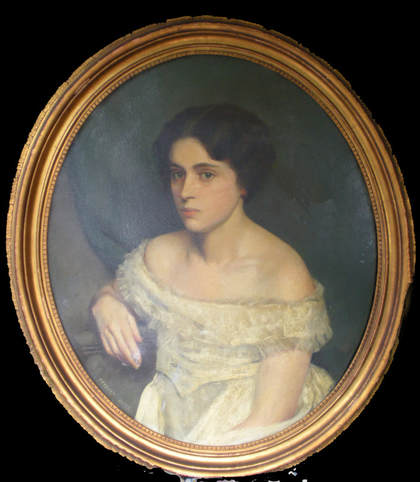 Herbert Ross painted this portrait of his neighbor at Twigmore, Lilian Fletcher, prior to her marriage to Hollywood producer Charles Brackett. Courtesy of Angela Lasseigne.
Herbert Ross painted this portrait of his neighbor at Twigmore, Lilian Fletcher, prior to her marriage to Hollywood producer Charles Brackett. Courtesy of Angela Lasseigne.
The following interview with Herbert Ross, offering many details about his career, is from a February 17, 1985 Courier-Journal story by Gregg Swem, titled “Painters for All Seasons.” Herbert was a day shy of his 90th birthday at the time, living in Jefferson Manor nursing home in Louisville and was one of 18 Kentucky artists being featured at an upcoming show called “Painters for All Seasons” in Frankfort:
…Ross, a native of Louisville who worked so methodically that in 75 years he turned out only about 100 oil paintings, hasn’t exhibited in Kentucky in many years. His work has been shown in Louisville’s J.B. Speed Art Museum, Little Gallery & Arts Club.
He lived abroad for 10 years and spent most of his life in Pewee Valley, where he painted portraits of such residents as Annie Fellows Johnston, author of “The Little Colonel” books, and her stepdaughter, Mary Johnston.
But Ross says, “I’m perfectly satisfied now not to paint. I don’t have enough vitality. I know my limitations.” He was interviewed in his simply finished room that was dominated by two of his still lifes and a portrait.
As recently as December 1983, he was studying painting at Jefferson Community College and taking brush to canvas in his apartment in The 800, where he lived until last summer.
Ross, a bachelor, loves to talk about art and the people who influenced him. He studied in Louisville, at the Art Institute of Chicago and the Art Students League in New York before going to Paris in 1922 to learn from two disparate painters – Andre Lhote and Richard E. Miller.
“I wanted to expose myself to both sides – to Lhote and the modern school which didn’t take root, and to Miller, the traditionalist.” Two Ross nudes painted during that period reflect the two schools.
After he returned to the Louisville area, he met Susanne Henning, daughter of James W. Henning, a Louisvillian who was governor of the New York Stock Exchange. She married a Frenchmen and was the Marquise de Charette. (She was later divorced.)
Ross painted her portrait in his Pewee Valley studio and in the 1920s and ‘30s was a frequent visitor at her Paris apartment and the family estate in Brittany. He often accompanied her to European resorts.
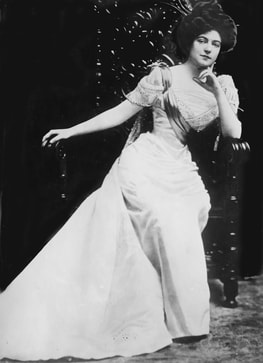 Susanne Henning married Marquis Charles-Antoine de Charette in November 1909.
Susanne Henning married Marquis Charles-Antoine de Charette in November 1909.
He painted a portrait of her daughter, Susanne, now Mrs. Ronald R. Van Stockum of Shelby Co., Ky., in a Villa at Capri. The mother’s portrait was exhibited in 1930 at the annual Paris Salon, organized by the Societé de Artists Français at the Grande Palais de Champs Elysees, and the daughter’s portrait was shown there the next year.
Ross said, “It was a great honor to be exhibited in that gallery. One of the reviewers said there is a very beautiful portrait – the daughter of the Marquise de Charette. Her mother was so jealous, because her daughter’s portrait got this lovely newspaper criticism and her picture wasn’t noticed.”
Ross had a studio in Paris for seven years. When he and the marquise returned to the Louisville area in the late 1930s, she helped find models for him and he worked on several portraits of her. She died in 1964.
Another force in Ross’ life was his mother, Gertrude Doherty Ross. When Ross was 15 and a
Ross said, “It was a great honor to be exhibited in that gallery. One of the reviewers said there is a very beautiful portrait – the daughter of the Marquise de Charette. Her mother was so jealous, because her daughter’s portrait got this lovely newspaper criticism and her picture wasn’t noticed.”
Ross had a studio in Paris for seven years. When he and the marquise returned to the Louisville area in the late 1930s, she helped find models for him and he worked on several portraits of her. She died in 1964.
Another force in Ross’ life was his mother, Gertrude Doherty Ross. When Ross was 15 and a
Self-Portraits
sophomore at Louisville Male High School, his mother decided he should study art. He had been “good at graphics” as a student at Miss Fanny Craig’s private school in Pewee Valley.
So mother and son took classes at Charles Sneed Williams’ studio, which “was right on Fourth Street in an office building across from Kaufman’s” (now part of the Galleria). One of the students was Dean Cornwell, a Louisvillian who became a famous illustrator and with whom Ross shared a roof while attending the Art Institute of Chicago.
When Williams left Louisville to paint portraits in Chicago, Ross and his mother rented a studio in the same building.
Ross painted several portraits of his mother, whose family had been in the whiskey business in Louisville. His father, William Ross, who helped run the now-defunct Ross Seed Co., died when Ross was a young man.
Herbert Ross said he never had to paint for a living; his mother supported him. He lived with her and younger sister Alice at the family home in Pewee.
“I was so happy there in the country,” he said. His studio was a converted carriage house with a stone fireplace and skylight. The family home was sold and the acreage subdivided in the late 1970s. (editor’s note: his studio has been razed. The unattached garage at the rear of the property was built in 1984.)
Two works from Ross’ early years are on display at a Louisville antiques store, Curiosity Shop, 1565 Bardstown Road. One is a 1925 portrait of Katherine Shelman, daughter of the Pewee Valley postmistress who moved to Chicago and became a doctor. (Note: Her mother, Anne D. Shelman, was postmistress from November 4, 1920 – February 22, 1922.) The other is a still life – an elaborate box and candlestick resting on velvet drapery.
Ross also painted portraits of a number of Louisvillians, including Mrs. Mary (Mary Miller) Furnish and the late A.L. Noe, president of the Lincoln Income Life Insurance Co.
Ross sold some paintings but most were given away. He said he wasn’t interested in promoting himself and marketing didn’t appeal to him.
He explained the time-consuming way in which he worked. He got the perspective of the person or object by outlining it on a piece of glass, traced this onto paper, then started painting on canvas. Some artists have said his method was too mechanical, but he found it essential to get the proper proportions.
Ross never stopped learning. In the summer of 1977 he returned to the Arts Students League and also studied with portraitist Robert Brackman in Connecticut...While living in The 800, Ross took classes in philosophy and religion at nearby Spalding University. He was active in the Arts Club and gave the club one of his works that won a prize there…
Not mentioned are the portraits he painted of his neighbors at The Beeches, author Annie Fellows Johnston and her stepdaughter and an artist in her own right, Mary G. Johnston. Herbert Ross died in 1989, four years after Swem’s interview.
So mother and son took classes at Charles Sneed Williams’ studio, which “was right on Fourth Street in an office building across from Kaufman’s” (now part of the Galleria). One of the students was Dean Cornwell, a Louisvillian who became a famous illustrator and with whom Ross shared a roof while attending the Art Institute of Chicago.
When Williams left Louisville to paint portraits in Chicago, Ross and his mother rented a studio in the same building.
Ross painted several portraits of his mother, whose family had been in the whiskey business in Louisville. His father, William Ross, who helped run the now-defunct Ross Seed Co., died when Ross was a young man.
Herbert Ross said he never had to paint for a living; his mother supported him. He lived with her and younger sister Alice at the family home in Pewee.
“I was so happy there in the country,” he said. His studio was a converted carriage house with a stone fireplace and skylight. The family home was sold and the acreage subdivided in the late 1970s. (editor’s note: his studio has been razed. The unattached garage at the rear of the property was built in 1984.)
Two works from Ross’ early years are on display at a Louisville antiques store, Curiosity Shop, 1565 Bardstown Road. One is a 1925 portrait of Katherine Shelman, daughter of the Pewee Valley postmistress who moved to Chicago and became a doctor. (Note: Her mother, Anne D. Shelman, was postmistress from November 4, 1920 – February 22, 1922.) The other is a still life – an elaborate box and candlestick resting on velvet drapery.
Ross also painted portraits of a number of Louisvillians, including Mrs. Mary (Mary Miller) Furnish and the late A.L. Noe, president of the Lincoln Income Life Insurance Co.
Ross sold some paintings but most were given away. He said he wasn’t interested in promoting himself and marketing didn’t appeal to him.
He explained the time-consuming way in which he worked. He got the perspective of the person or object by outlining it on a piece of glass, traced this onto paper, then started painting on canvas. Some artists have said his method was too mechanical, but he found it essential to get the proper proportions.
Ross never stopped learning. In the summer of 1977 he returned to the Arts Students League and also studied with portraitist Robert Brackman in Connecticut...While living in The 800, Ross took classes in philosophy and religion at nearby Spalding University. He was active in the Arts Club and gave the club one of his works that won a prize there…
Not mentioned are the portraits he painted of his neighbors at The Beeches, author Annie Fellows Johnston and her stepdaughter and an artist in her own right, Mary G. Johnston. Herbert Ross died in 1989, four years after Swem’s interview.
Herbert Ross Portraits of His Neighbors at The Beeches: Annie Fellows Johnston and Her Stepdaughter, Mary G. Johnston
This excerpt from Mary's genealogy blog offers some insight into what the Ross home was like during Herbert Ross's last years in Pewee Valley:
Mr. Ross was a bit of a mystery to us. His home was almost invisible from the street and we’d never heard of him or seen him in town. But, never the less, we trudged up the front steps of his 1870 Italianate home one hot sticky humid day. For some reason the place seemed a bit spooky to us, so we timidly knocked on his front door. He came out to talk to us from the top of his front porch steps as we stood down at the bottom looking up. He told us that he was an artist who had lived in New York City but had recently come back to this, his childhood home, and was now living there with his sister. We wondered about the sister, who he kept mentioning, but who never appeared, and visions of Psycho danced in our heads. After going on and on for a while, telling us his story, our eyes began to wander and we all seemed to notice at the same time that the large expansive flower beds in front of the house were completely planted with plastic flowers. He gave us permission to do a bit of digging but I don’t think he said we could poke around in the small house behind the main house. We did, and found the tattered and cobweb filled place filled with Mr. Ross’s old paintings. Moments later we were stopped dead in our tracks by a loud ripping sound. Sure we had been caught in the summer house, we turned to see that it was only the wind that had blown through the open window causing the peeling wallpaper to rip. We were relieved that old Mr. Ross hadn’t caught us, and counting our blessings we never returned or saw him again. Today most of the Ross property is a large subdivision.
Mr. Ross was a bit of a mystery to us. His home was almost invisible from the street and we’d never heard of him or seen him in town. But, never the less, we trudged up the front steps of his 1870 Italianate home one hot sticky humid day. For some reason the place seemed a bit spooky to us, so we timidly knocked on his front door. He came out to talk to us from the top of his front porch steps as we stood down at the bottom looking up. He told us that he was an artist who had lived in New York City but had recently come back to this, his childhood home, and was now living there with his sister. We wondered about the sister, who he kept mentioning, but who never appeared, and visions of Psycho danced in our heads. After going on and on for a while, telling us his story, our eyes began to wander and we all seemed to notice at the same time that the large expansive flower beds in front of the house were completely planted with plastic flowers. He gave us permission to do a bit of digging but I don’t think he said we could poke around in the small house behind the main house. We did, and found the tattered and cobweb filled place filled with Mr. Ross’s old paintings. Moments later we were stopped dead in our tracks by a loud ripping sound. Sure we had been caught in the summer house, we turned to see that it was only the wind that had blown through the open window causing the peeling wallpaper to rip. We were relieved that old Mr. Ross hadn’t caught us, and counting our blessings we never returned or saw him again. Today most of the Ross property is a large subdivision.
1989 Photos of Herbert Ross's Studio From the Central Avenue Historic District Nomination to the National Register of Historic Places
|
Ross Woods Subdivision
|
|
In 1978, the Van Horne-Ross estate was purchased by developers Don Henson and Ken Hinton, Henson & Hinton, Inc., who subdivided the property and named their new subdivision Ross Woods. The development stirred up a hornet's nest. Pewee Valley resident Steve Conn, who grew up at The Gables, recalls Lilian Fletcher Brackett’s reaction when the Ross house was sold and the property subdivided. The builder and owner of Twigmore was extremely upset by the change to her beloved Pewee Valley, he says. “I remember her saying, ‘This is what happens when you live too long.’”
In 1999, the South Oldham Development Group extended Ross Wood subdivision's Ridgewood Drive as section 2 of the Woods of Pewee Valley subdivision.
In 1999, the South Oldham Development Group extended Ross Wood subdivision's Ridgewood Drive as section 2 of the Woods of Pewee Valley subdivision.
Related Links:

